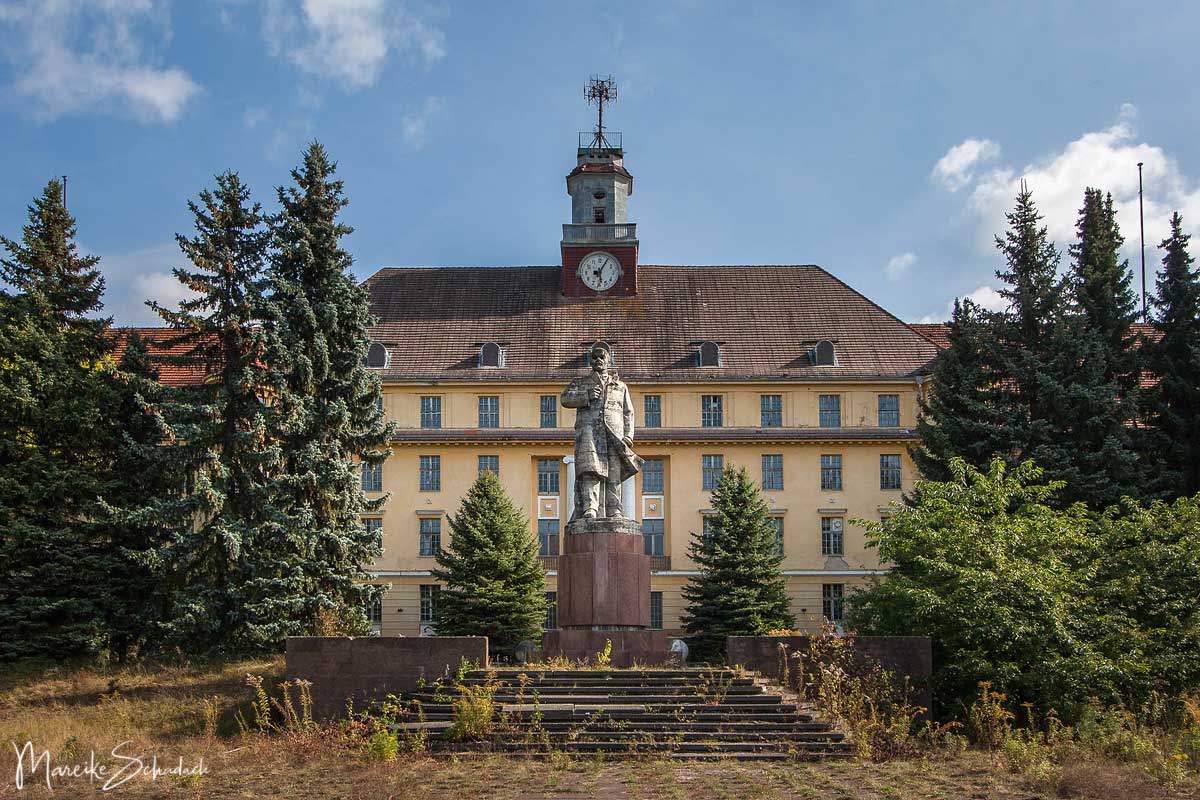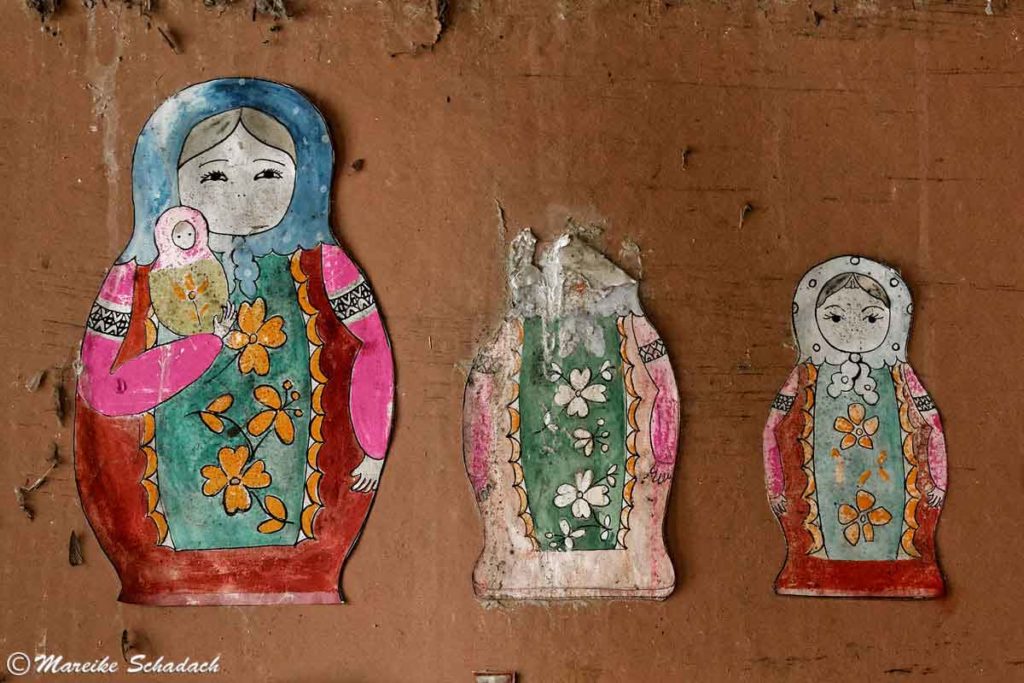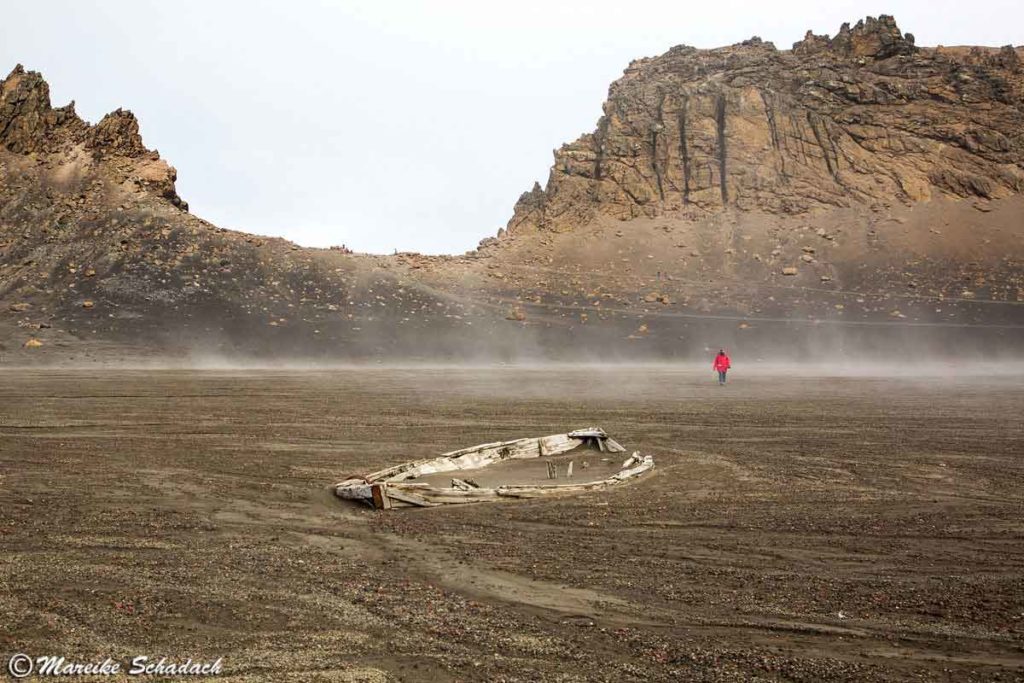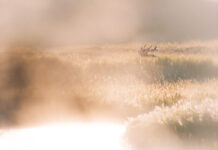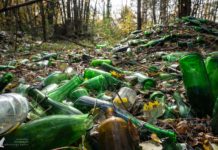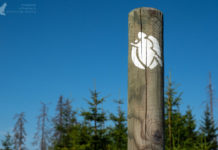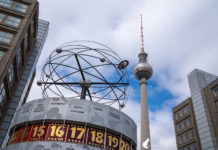Germany. When I moved to Berlin in 1995, there were lost places like a dime a dozen. There were hardly any fences, and certainly no surveillance. They were hidden, ephemeral and always surrounded by a certain myth and adventure. And that's what made these abandoned places so appealing. ...even today. But in the course of time they became less and less. The lost places were cordoned off, demolished or, in the best case, developed for a new use. But some are still there. Here I show you my 12 favourite lost places in Berlin and Brandenburg. I also tell you if and how you can visit the abandoned places yourself.
Non-solicited, unpaid advertising. This article contains affiliate links*, marked with an asterisk.
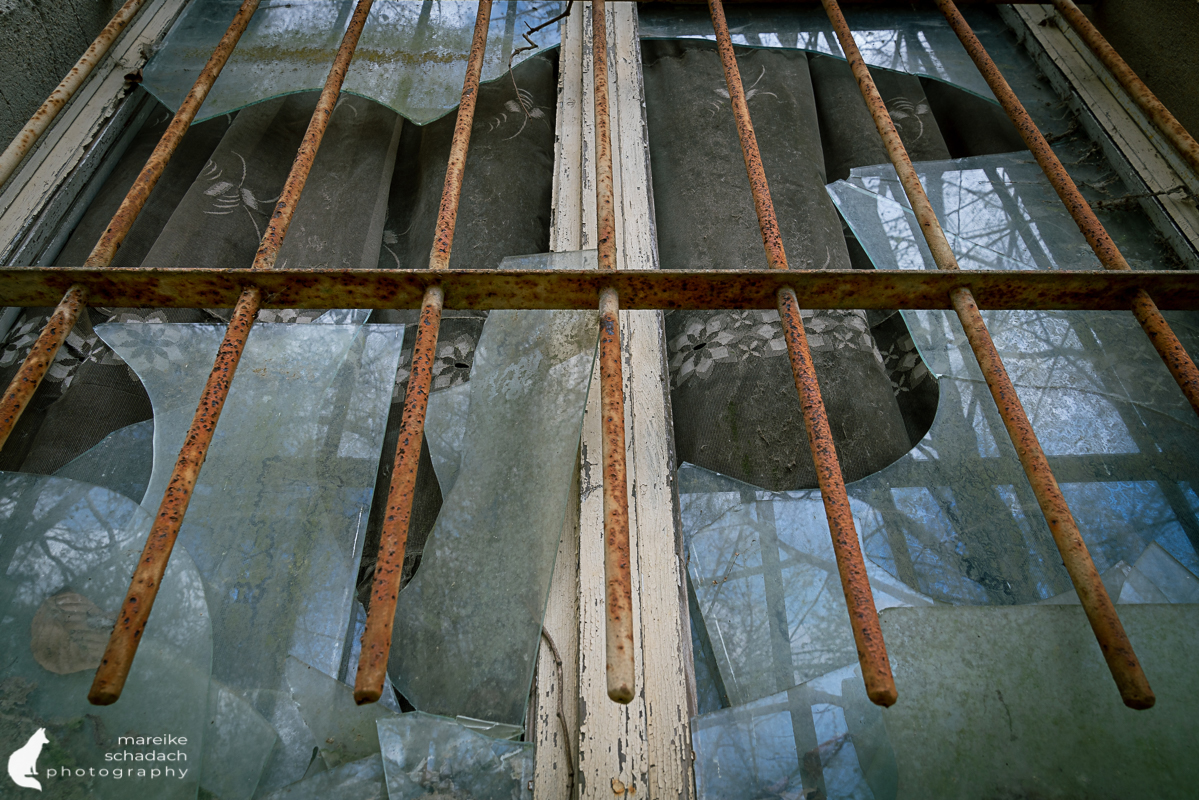
My Top 14 Lost Places in Berlin and Brandenburg are:
- Military Headquarters Wünsdorf
- Spreepark - former Amusement Park of the GDR
- Beelitz Sanatorium
- Teufelsberg Listening Station
- Dreilinden Border Control Point and Remains of the Old Autobahn
- Olympic Village of 1936 near Elstal
- Government and Stasi Hospital of the GDR in Berlin-Buch
- Tempelhof Airport
- Former Iraqi Embassy in the GDR
- Rüdersdorf Feed Phosphate Factory
- Locomotive Shed Pankow-Heinersdorf
- Airfield Werneuchen
- Tempelhof Shunting yard on the Schöneberger Südgelände
- Stadtbad (City Bath) Lichtenberg
- Bucket Wheel Excavator 1473
- Haidemühl Glass Factory
In Berlin and Brandenburg there are still numerous lost places. But time has left its traces. Decay and vandalism are obvious. But a second look reveals the former beauty and importance of the placesThis is the moment when I wish to capture those places with my photos. I want to save it from transience and tell its story(s).
Some of the above mentioned Lost Places in Berlin are currently being developed. The Olympic Village is being developed into a residential area and the Spreepark is being converted into a public park. There are now also plans for the Beelitz Sanatorium. I very much hope that the history of these places will not be erased. How nice it would be if they could be remembered and experienced as what they once were (at least from the outside or with information boards).
Visiting Lost Places - What is allowed?
Is it legal to enter lost places? As a rule, unfortunately not. Most abandoned places are private property - trespassing is considered illegal. Mostly, barriers and signs make this clear. Some places are even secured with surveillance cameras and/or motion detectors. And often with good reason: vandalism and needless destruction should be prevented. In addition, some lost places are also not entirely without danger. Danger of collapse, falling of loose parts as well as breaking in through rotten ceilings pose a risk. Many abandoned places in Berlin and Brandenburg can therefore only be viewed from the outside. However, you can also visit some lost places as part of a guided tour or even a photo tour . And that is absolutely worthwhile!
Disclaimer: Illegally entering into pacified property is trespassing. Entering Lost Places can be dangerous, this also applies to legal access. This article is not a recommendation for action, but is purely informative. No liability is assumed.

#1 Military Headquarters Wünsdorf
The "Forbidden City" at the Gates of Berlin
"Little Moscow" in Wünsdorf is my favourite of the lost places around Berlin. Behind walls, fences and barriers, the military site developed into a Russian city on the doorstep of Berlin. At peak times, up to 75,000 military personnel and their families lived here. There were schools, kindergartens, shops as well as sports and cultural facilities. In addition, a train ran to Moscow every day, connecting the location with the home of its inhabitants. But contacts between the Russians and the GDR population were prohibited. Only those who worked here and had a special identity card were allowed to enter. For this reason, the military location Wünsdorf was also called the "Forbidden City".
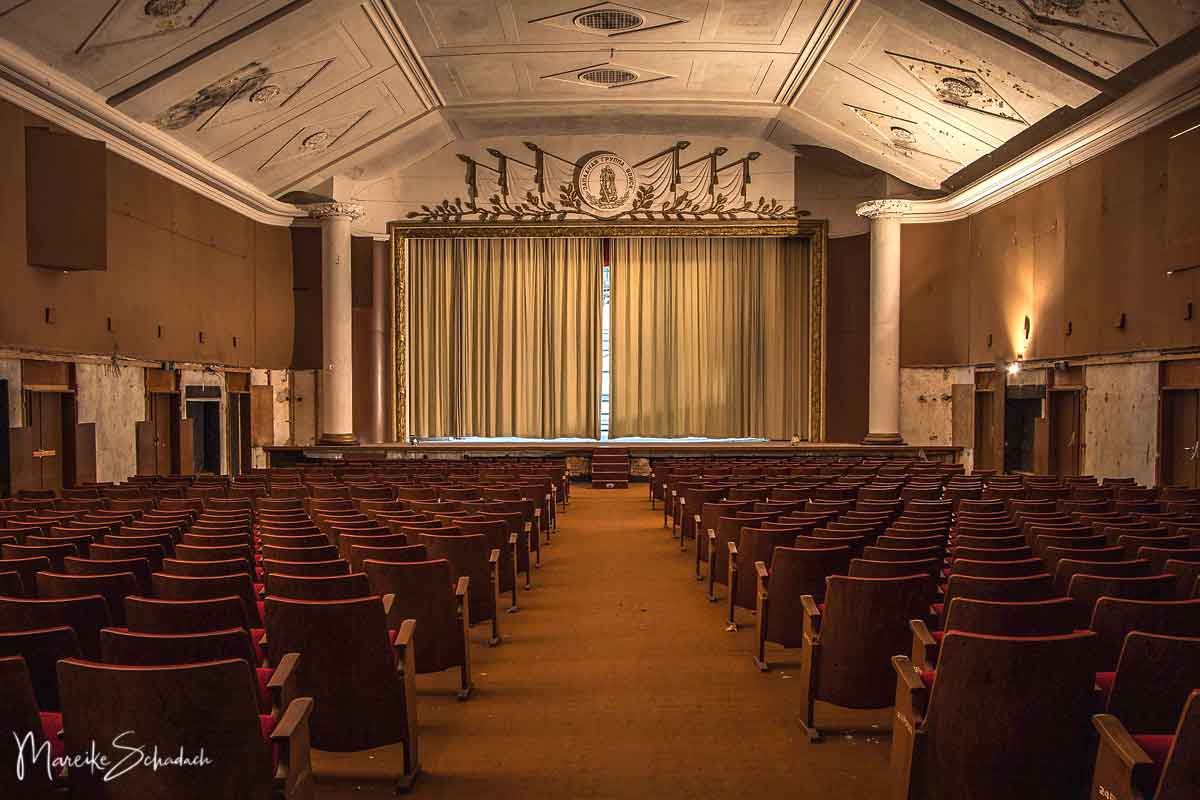
History of the Military Site Wünsdorf
The history of the military site dates back to Wilhelminian times . Already in 1872 Wünsdorf was a military training area. During the First World War the headquarters of the Reichswehr and a prisoner of war camp were located here. During the Nazi era, Wünsdorf was an army sports school and the seat of the army high command. Later the buildings were used as a military hospital . After the Second World War, the Soviet Army finally moved in here in 1951. They then used and expanded the military and bunker facilities as their headquarters. From here, the total of 1500 locations of the Soviet Army in the GDR were administered.
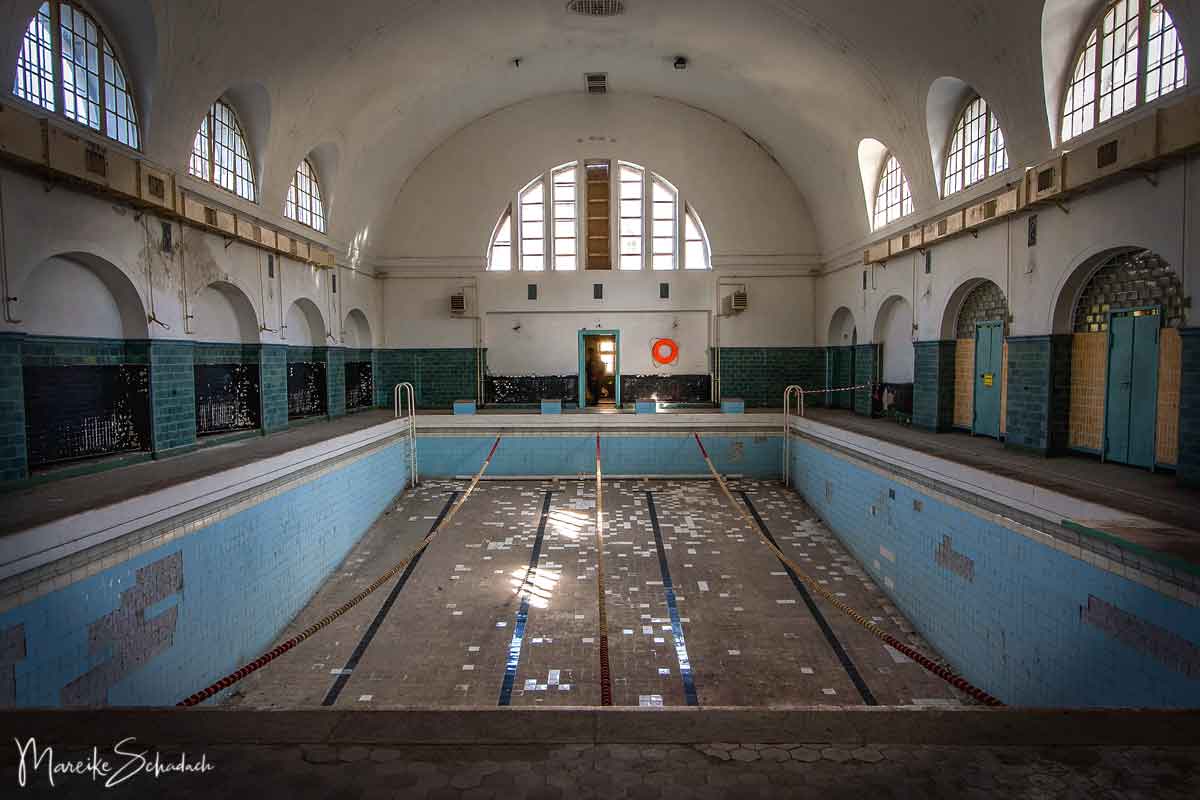
After the reunification of Germany, the Russians left the site in 1994. They took everything with them, Little Moscow became a ghost town. The 260-hectare site was then cleared of ammunition remnants, scrap metal and various contaminated sites . After that, they started to look for a new use für the approximately 700 buildings in need of renovation . However, countless buildings still stand empty and have so far only been repaired in a makeshift manner. Wallpaper and paint flake off the walls and fade. Plants grow through open windows and doors. Nature recaptures the area and brings a mystical atmosphere to a place where time has stood still.
Tour of the Lost Place in Wünsdorf
The abandoned place is best seen during a photo tour with Go2Know with your camera. What is there to see? Among other things, the castle-like House of Officers, a magnificent theater hall, a gymnasium, a cinema, a swimming hall with a boiler house and an outdoor pool. One of the highlights is also the Lenin Monument in front of the House of Officers (you can see it on the title picture).
Tip: The village of Wünsdorf, with a population of around 6000, is nicknamed "Book and bunker town". Because numerous antiquarian bookshops offer books. You can also visit some of the bunkers on guided tours.

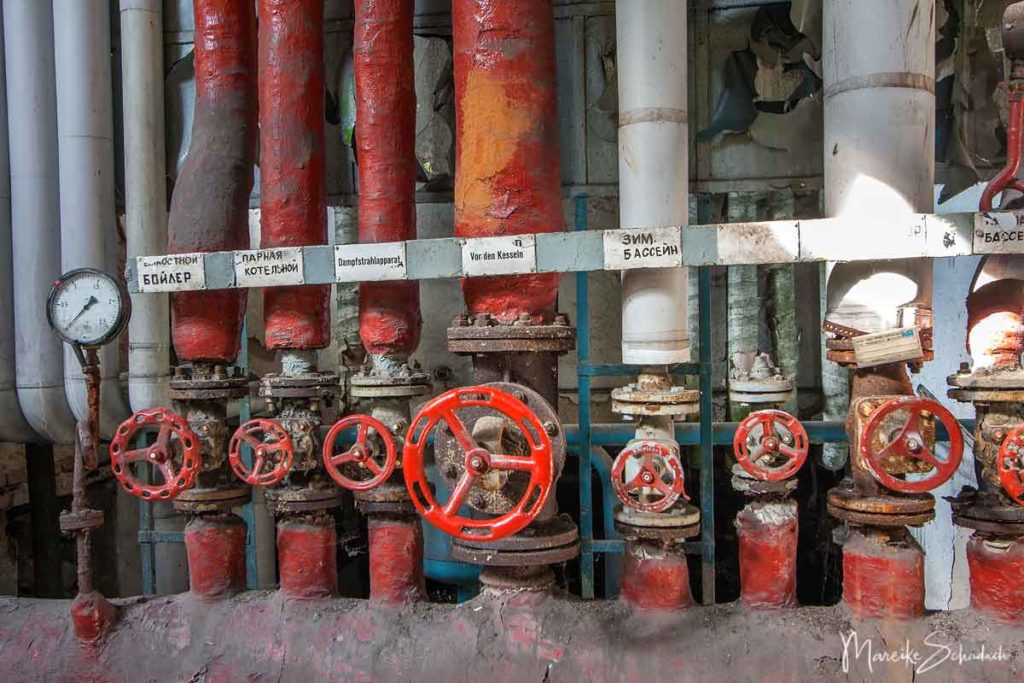
Visit: Photo tours are offered by Go2Know
Address: Hauptallee 116, 15806 Zossen
Directions to get there: Take the regional train R5 or R7 from Berlin main station to Wünsdorf Waldstadt. From there it is a 15-minute walk (total duration about 1.25 hours). By car you take the B96 from Berlin about 60 minutes south.
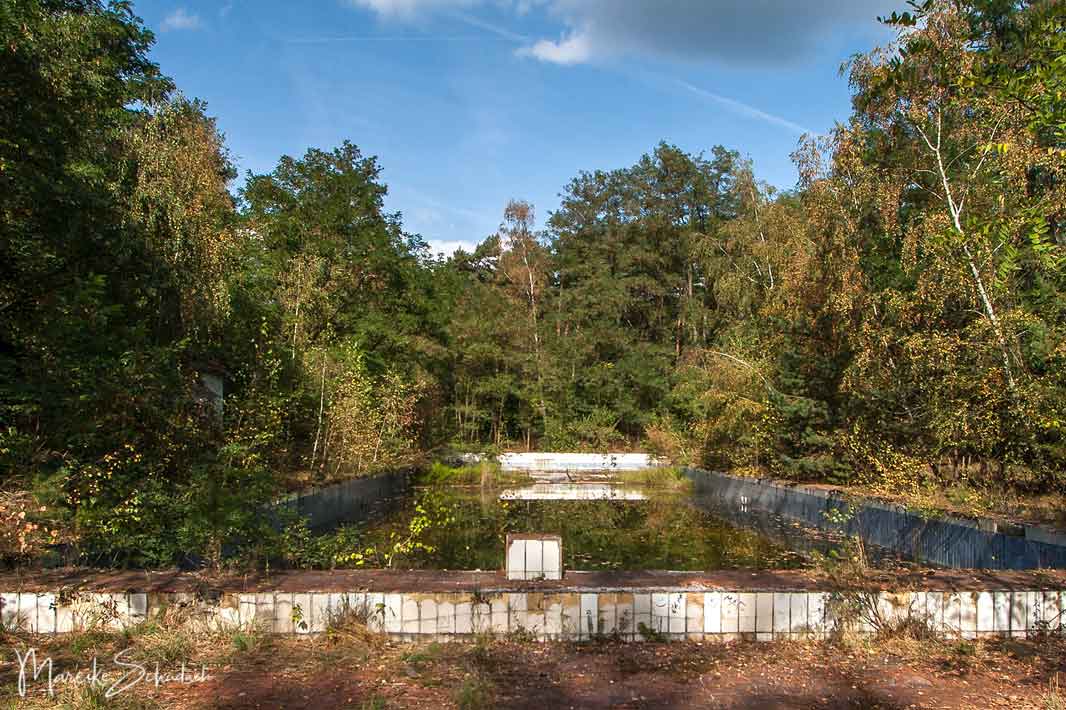
#2 Spreepark - former Amusement Park of the GDR
The big ferris wheel of the Spreepark is already visible from afar. But it has not turned for a long time. Also the other rides stand still and become more and more overgrown. Today there is not much left of the former amusement park in the Plänterwald. But everything that is still there offers many great opportunities for photographers.
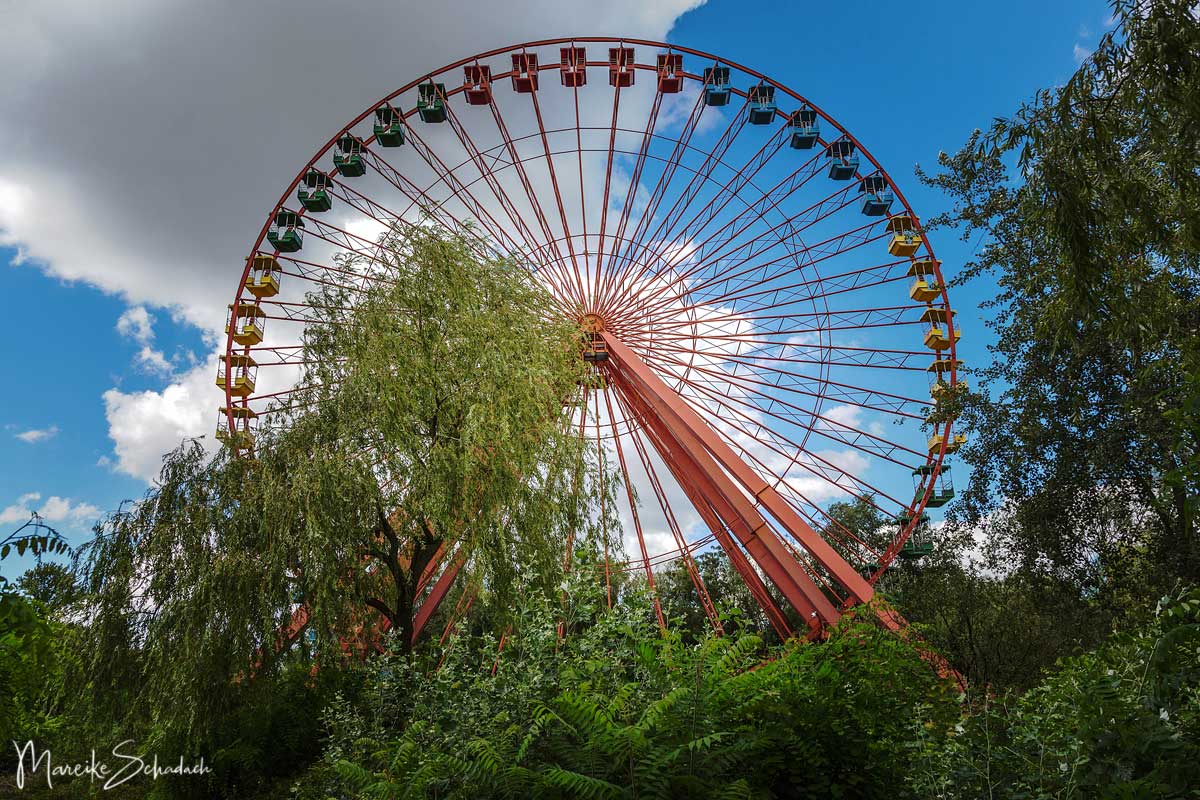
In 1969 the first and only permanent amusement park in the GDR. The "Kulturpark Plänterwald" counted about 1.7 million visitors in its best year. After the German reunification the amusement park was then taken over by the Spreepark GmbH & Co. KG of the showman Norbert Witte. Since then the park is called "Spreepark". But due to a lack of guests the owner filed for insolvency in 2001 and the park closed down. Several attempts to reopen the park to visitors followed. But none of them was successful. Instead, the owner and his son made headlines and were convicted of drug smuggling.
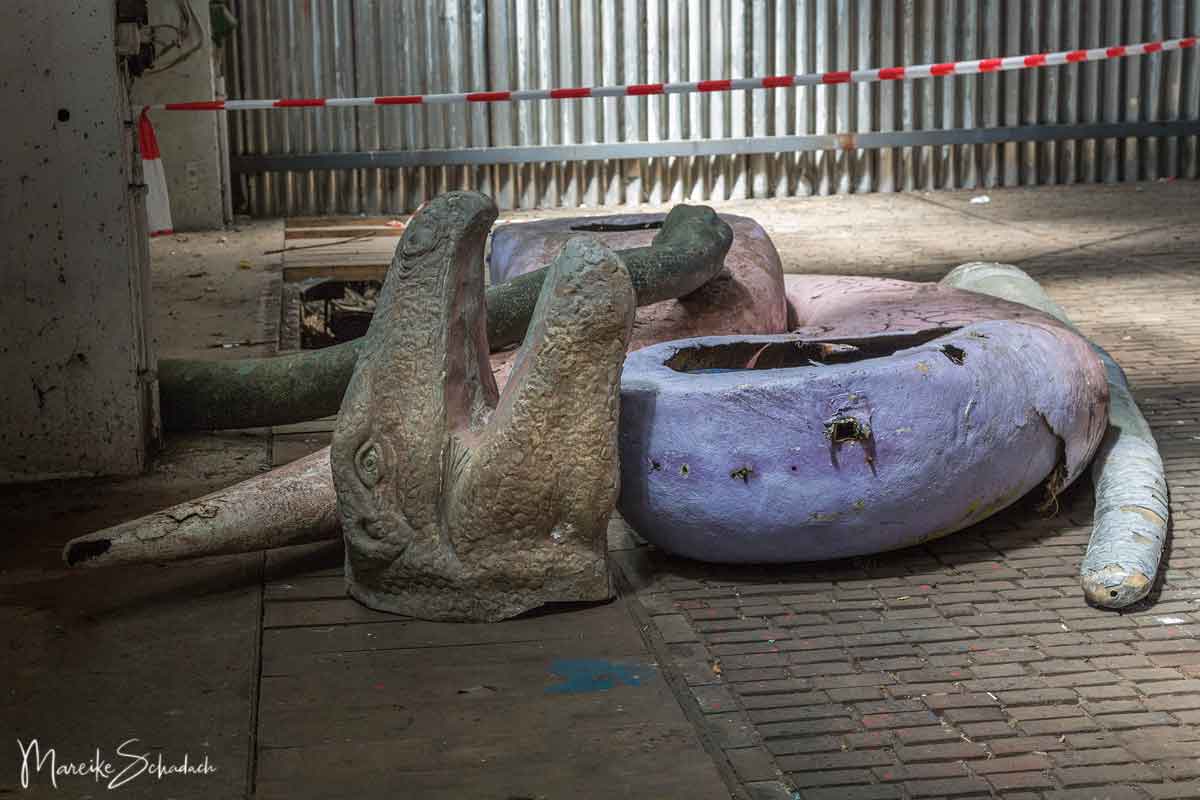
From 2011 onwards, individual rides continued to operate for a while and guests were served in the "Mythos" café. But the temporary use could not stop the decay of the amusement park. Some of the buildings were in danger of collapsing. After a major fire in August 2014, several buildings even had to be demolished. In 2014, the state of Berlin finally bought back the site. Through the state-owned Grün Berlin GmbH, the Lost Place is now to be converted into a cultural and leisure park attractive to tourists. The past as a famous amusement park is also to have a place in the new usage concept. The Ferris wheel is also to be turned again one day.
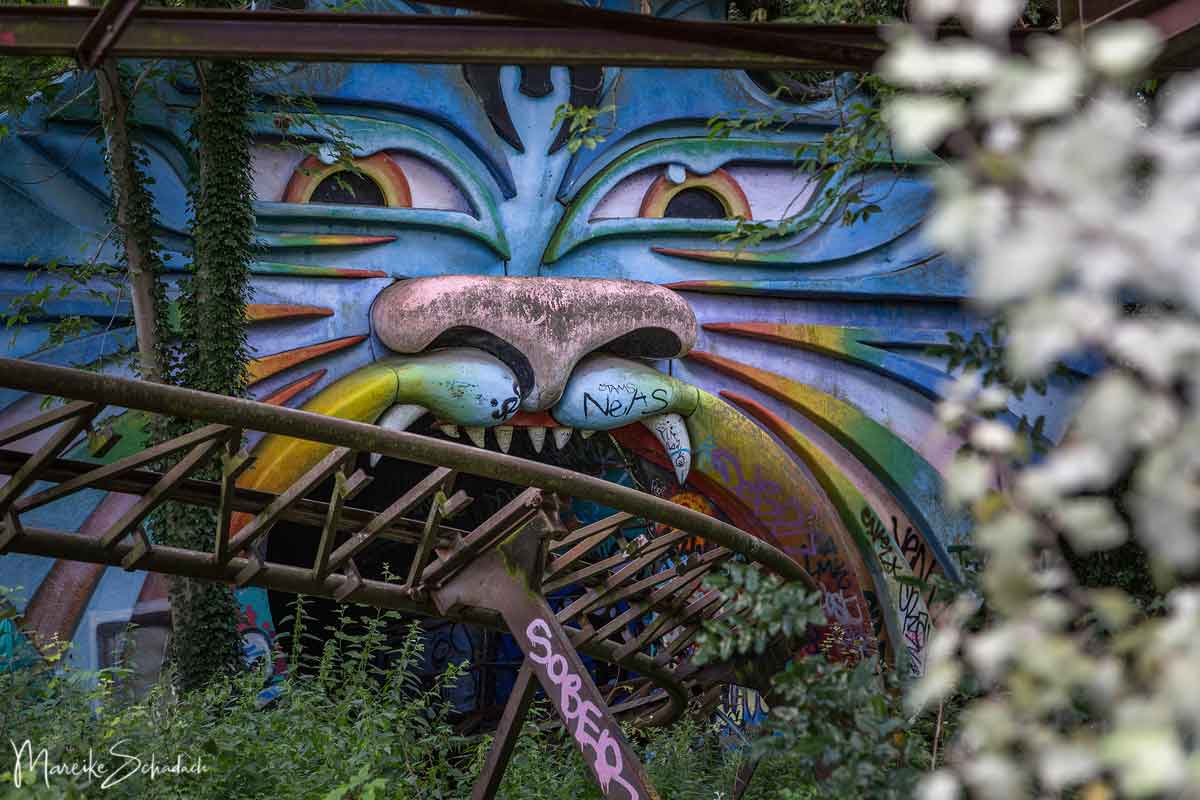
Visit: The Spreepark can be visited in guided tours every year from April to the beginning of November.
Address: Kiehnwerderallee 1-3, 12437 Berlin
Directions to get there: To the Plänterwald S-Bahn station (S8, S9), from here 15 minutes on foot
#3 Beelitz Sanatorium
The Beelitz sanatoriums are one of the best known and most popular lost places in the Berlin area. Scary stories entwine themselves around the buildings of the abandoned place, which are widely spread in the forest. The mystical atmosphere and the villa-like architecture also offer countless photo motifs.
The workers' lung sanatorium Beelitz still comprises 60 buildings on an area of 200 hectares. They were built between 1898 and 1930 by the Berlin State Insurance Institution. As one of the largest hospital complexes in the Berlin area, the sanatoriums could accommodate up to 1,200 patients at that time. The patients were mostly suffering from tuberculosis. Here they were treated with healing treatments, fresh air and a feel-good programme. This and strict hygiene were the only things that could be done against tuberculosis at that time. Because antibiotics were not yet available.

During the First and Second World Wars the sanatoriums were converted into a military hospital for wounded soldiers. Afterwards the Soviet Army operated the largest military hospital outside the Soviet Union here from 1945 to 1993.
In the meantime, all buildings of the former sanatoriums have been sold and are now to be renovated. In some areas the work has already been completed. Single-family houses, rented apartments, a "Creative Village" for creative people and a rehabilitation clinic have been built here.
Tip: Take a look at everything from above. A 300-metre-long treetop path leads you 23 metres above the ruins of buildings overgrown with trees.
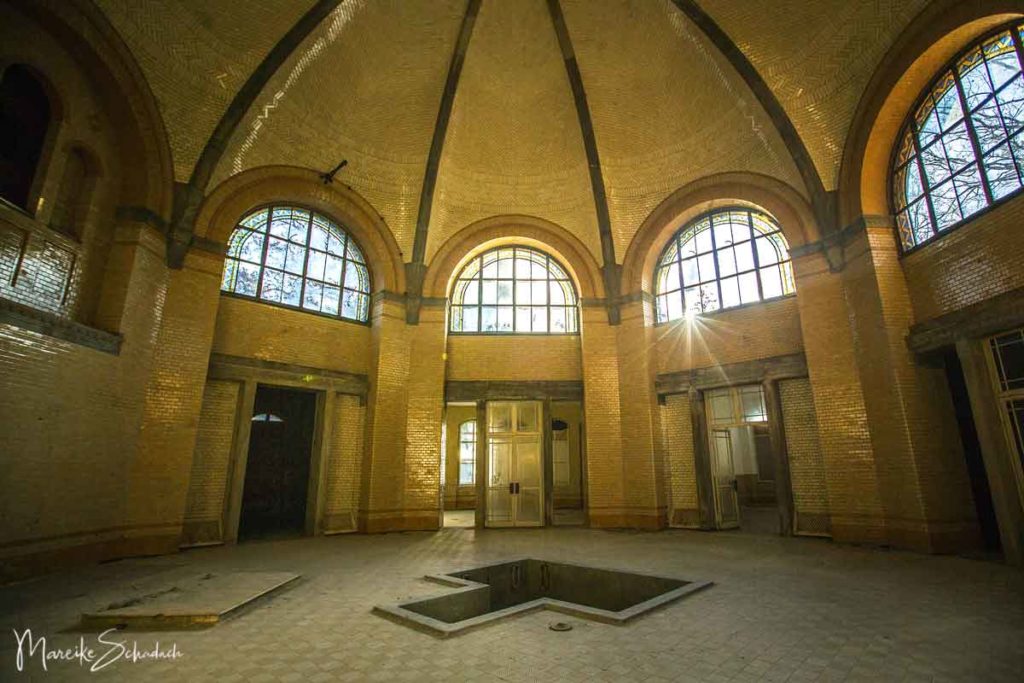

Visit: You can visit the sanatoriums in guided tours from Go2Know. As the houses are gradually being renovated, fewer and fewer houses are open for tours. You can also visit the associated combined heat and power plant in guided tours by the Förderverein Heiz-Kraft-Werk e.V.
Directions to get there: Take the Regional Express RE 7 to the stop Beelitz-Heilstätten. By car, take the A9 motorway to the Beelitz-Heilstätten/Fichtenwalde exit.
#4 Listening Station Teufelsberg - Street Art Mecca & Lost Place in Berlin
Three white spheres stand out against the dense green leaves of the Grunewald. They can be seen from every vantage point in the city and in doing so shape the silhouette of Berlin. Like a fortress, they are enthroned on the second highest point of Berlin, the 120.1-meter-high Teufelsberg. It is a place of history and art. A lost place full of colour and creativity. Because the former listening station has developed into the largest street art gallery in Europe . In my separate article about the Listening station at the Teufelsberg in Berlin you will find out everything you need to know before your visit. You will also find many great photos of this very special place in the middle of Grunewald.
Tip: How about a guided tour incl. shuttle to the former listening station* at Teufelsberg?

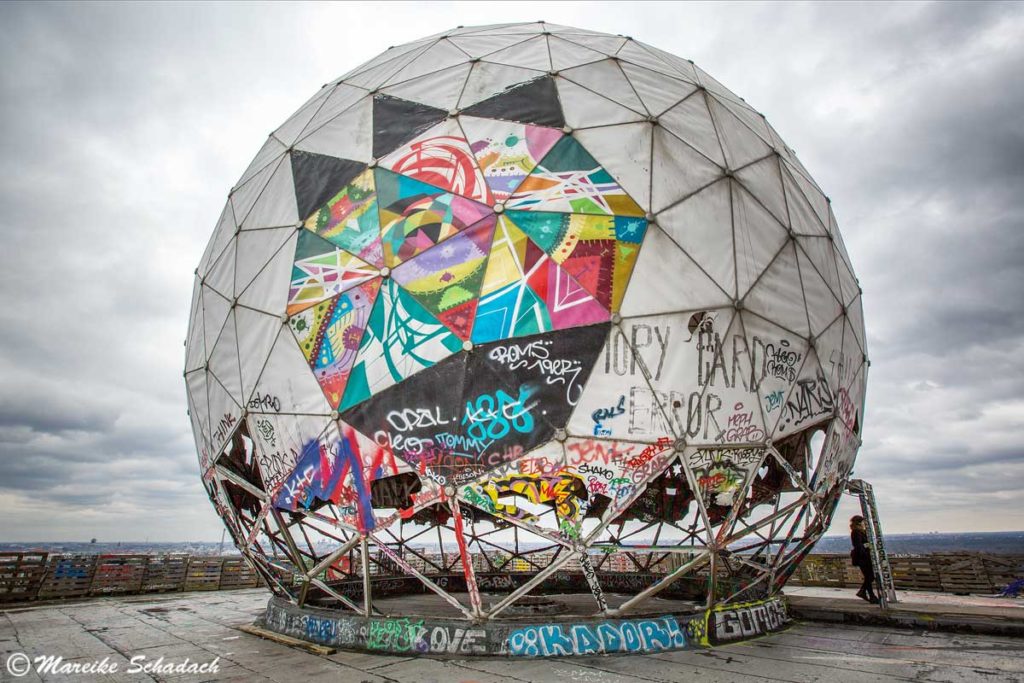
How do I tell my camera?
You are sometimes not sure how to get your camera to take the shots the way you want it to?
Karin and Markus from Fotonomaden explain it step by step in their online course* or in their 1:1 coaching* (sorry, only in German).
#5 Dreilinden Border Control Point and Remains of the Old Autobahn
Everyone who has ever driven to Berlin via the A115 motorway knows the former Dreilinden border checkpoint. The checkpoint - also known as Checkpoint Bravo - also included the Pop Art roundhouse of the former rest stop. With its bright colours, the building was intended to provide a deliberate contrast to the grey GDR buildings on the border. The listed building has been empty since 2002. But it still reminds passers-by of the division of Germany and the isolated location of West Berlin.
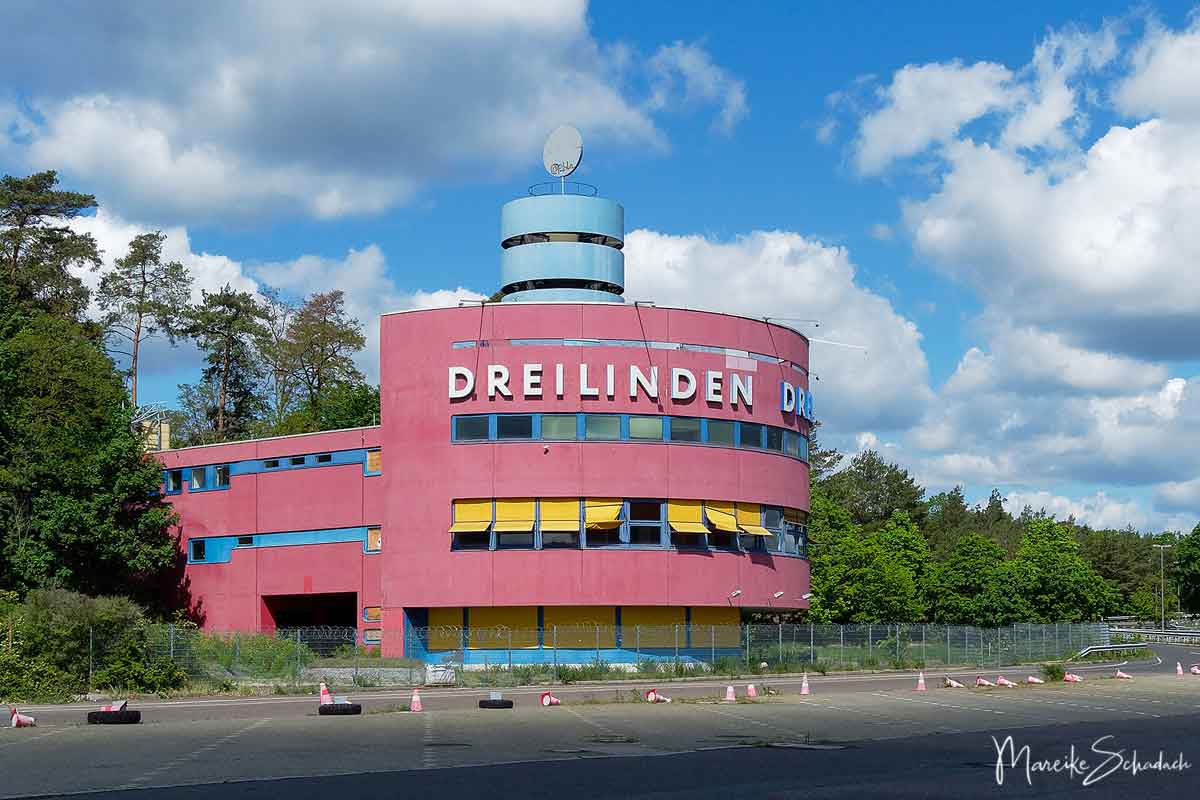
But the original Dreilinden checkpoint was located at a different place until 1969. Since the motorway section ran very close to the inner-German border, it was relocated along with the checkpoint. The old motorway section thus became a no man's land. After the German reunification it was occasionally used as a backdrop for filming, for example for the television series Alarm for Cobra 11..
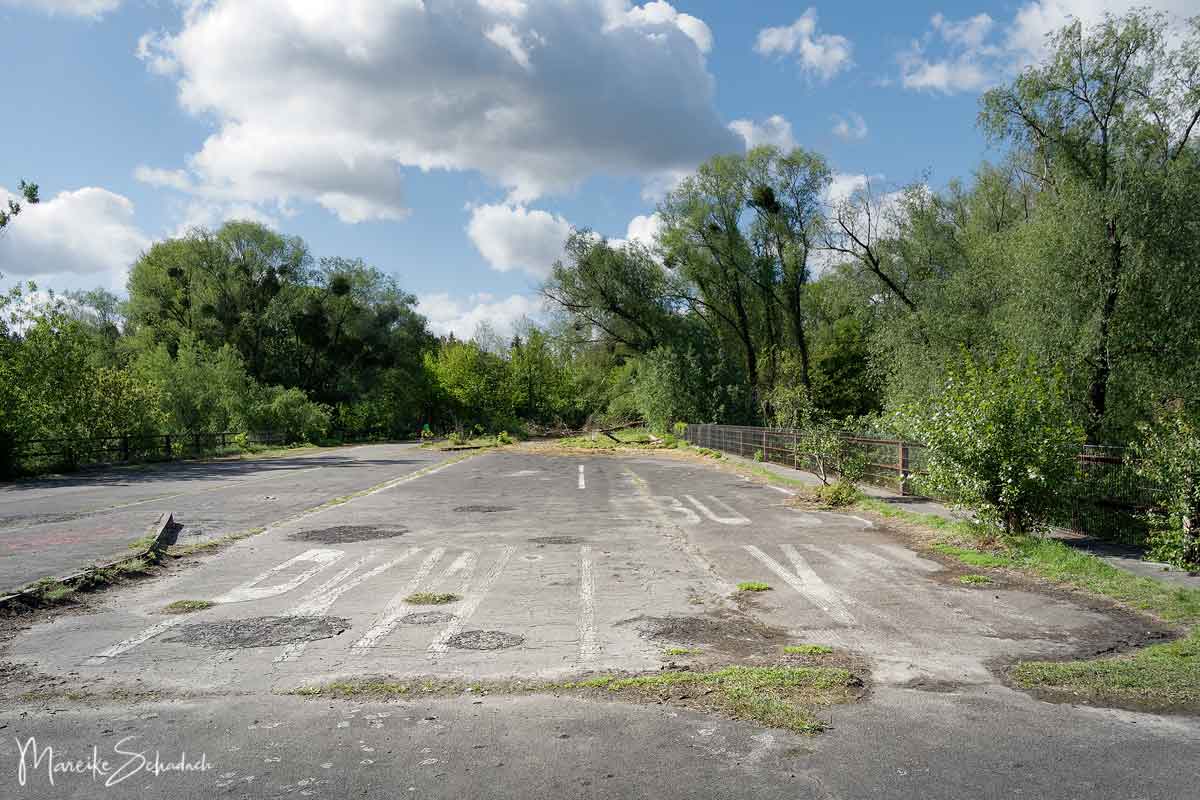
In 1999/2000 the old motorway between Avus and Berliner Ring was finally demolished as part of a compensation measure. Today, therefore, only a few remains of the checkpoint can still be seen: the Teltow Canal Bridge, a service station building, a three-mast flag installation and a motor vehicle catchment trench. These are rare remains from the early days of the division of Germany and are therefore classified as listed under historical monuments since 1971. From the motorway there are still some road remains, footpaths on the sides and old markings .
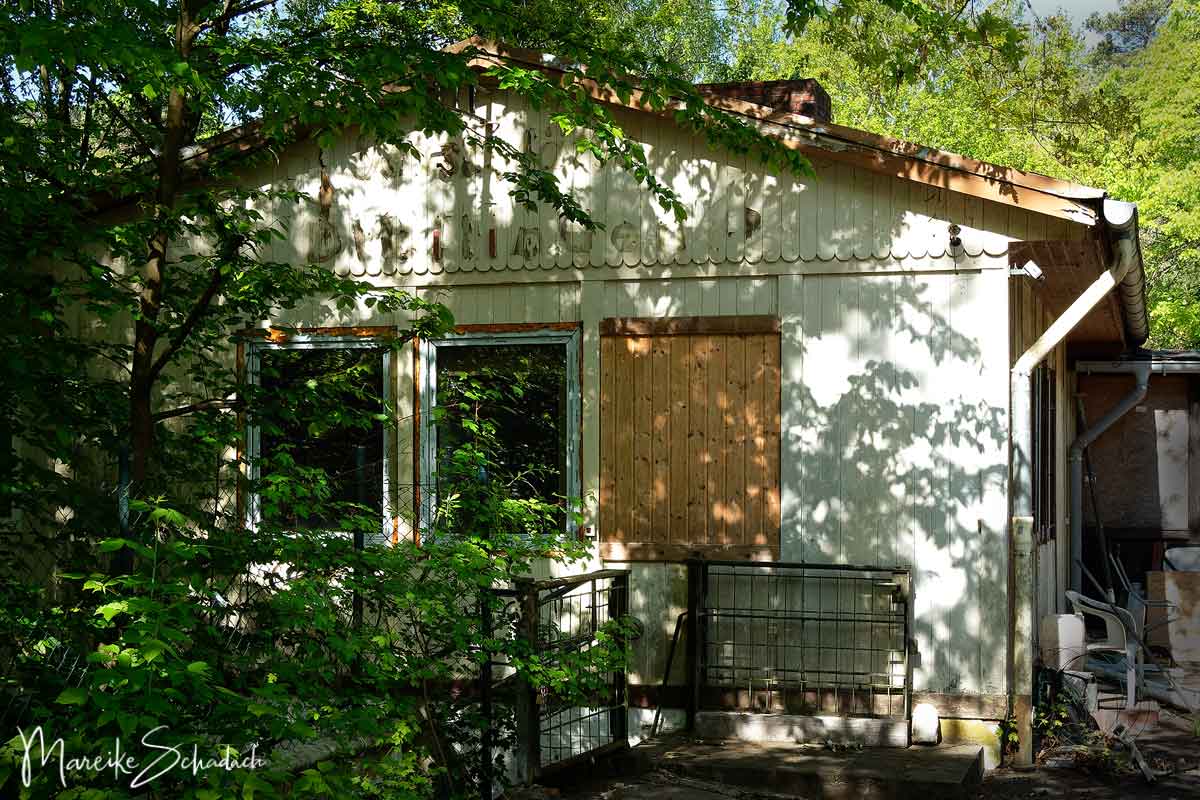
Visit: The outdoor area is freely accessible. However, it is not permitted to enter the buildings.
Directions to get there: The two former border checkpoints Dreilinden as well as the remains of the old motorway can best be explored on a walk from Wannsee S-Bahn station to Griebnitzsee S-Bahn station (length about 9 km).
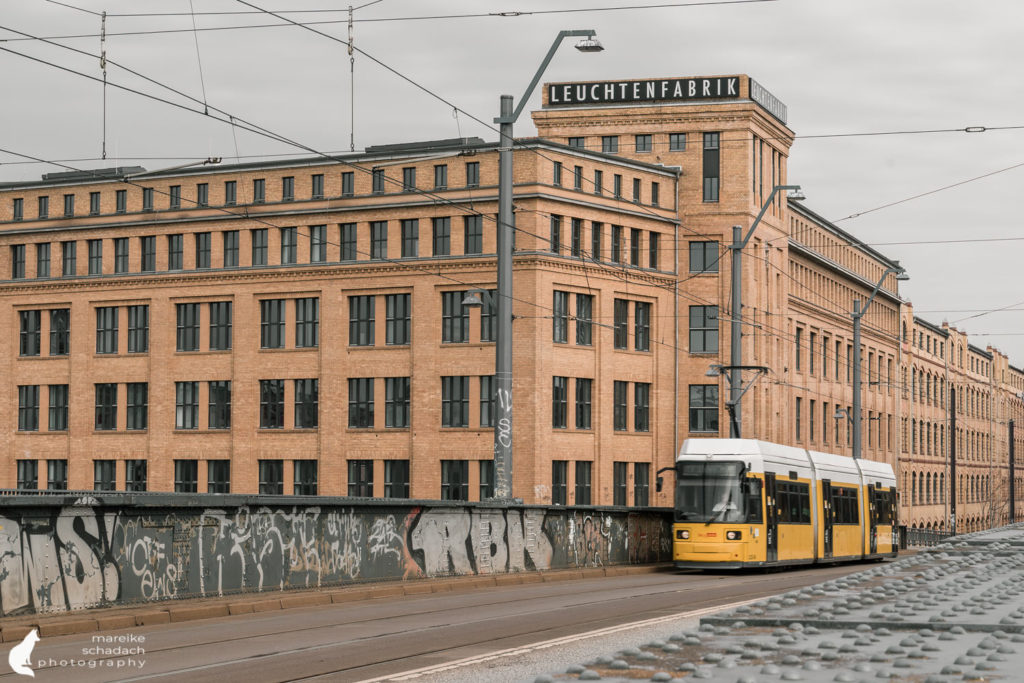
Reading Tip! Photo Tour in "Elektropolis" - Industrial Architecture in Berlin Schöneweide
For lovers of industrial architecture, brick romance and lost places, Berlin Schöneweide is one of the best photo locations in Berlin. The tour takes you from Schöneweide S-Bahn station along the banks of the Spree, where the former "cathedrals of labor" are lined up like a string of pearls over a length of three kilometers. The industrial monuments made of the yellow Oberschöneweider clinker brick still set standards today and enchant you with their history and their morbid charm of nowadays.
#6 Olympic Village of 1936 near Elstal
Actually, it's great when abandoned places are reborn. When the walls of buildings can continue to tell their stories and new stories are added. But as a lover of Lost Places, I always feel a bit of a loss. The Olympic Village is also being developed since 2019. Exclusive apartments are to be created. Shortly before the construction work began I had the opportunity to explore the site during a guided tour.
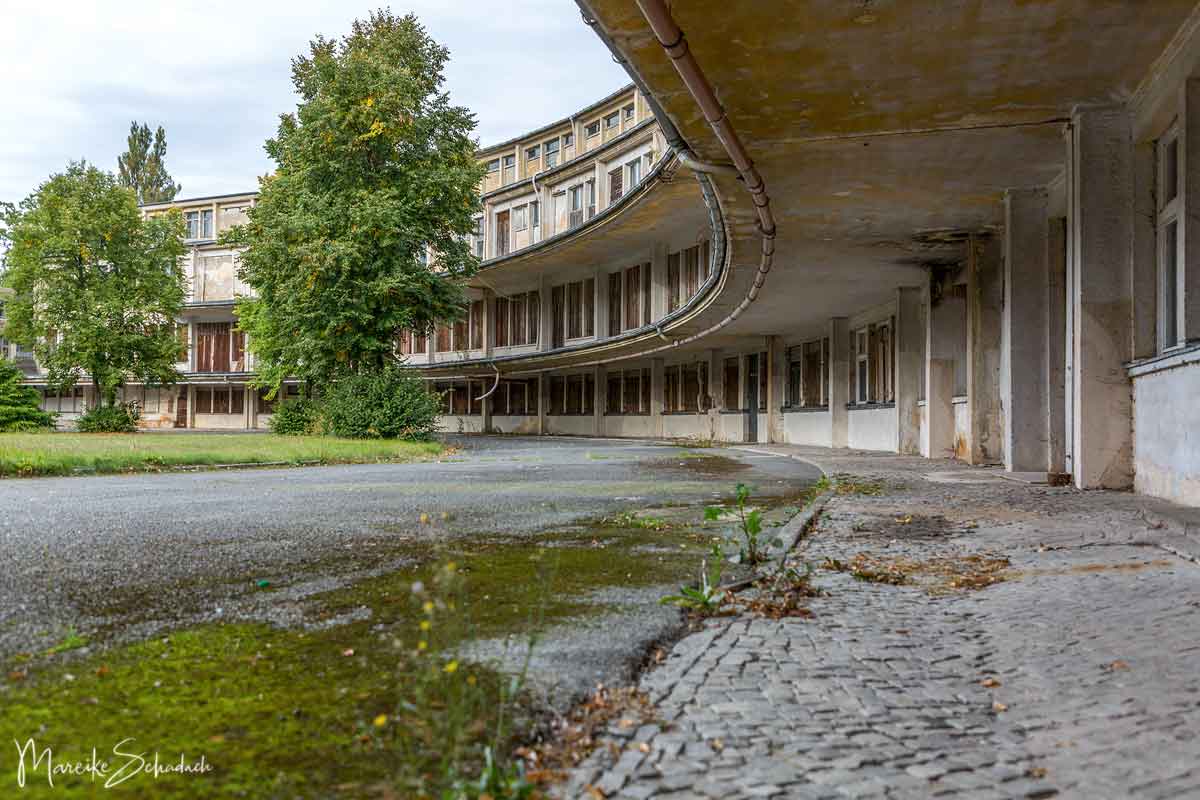
The Olympic Village was truly a small village. It included a reception building, 136 residential buildings, a dining house with 38 dining halls, a kitchen house, the Hindenburg House, the Commander's House and a hospital. With a sports hall, sports field, swimming pool and sauna, the athletes' need for exercise was even taken into account. During the 1936 Olympic Games, about 3600 male athletes and staff lived here. Women, however, were not allowed to enter. Instead, the 330 female athletes were accommodated in the German Sports Forum directly at the Olympic Stadium.
All buildings were constructed in massive form between 1934 and 1936. Because later the Wehrmacht was to continue using the buildings. After all, the military training area Döberitz was right opposite. After the Second World War, the Soviet Army continued to use the site and the military training area until 1992.

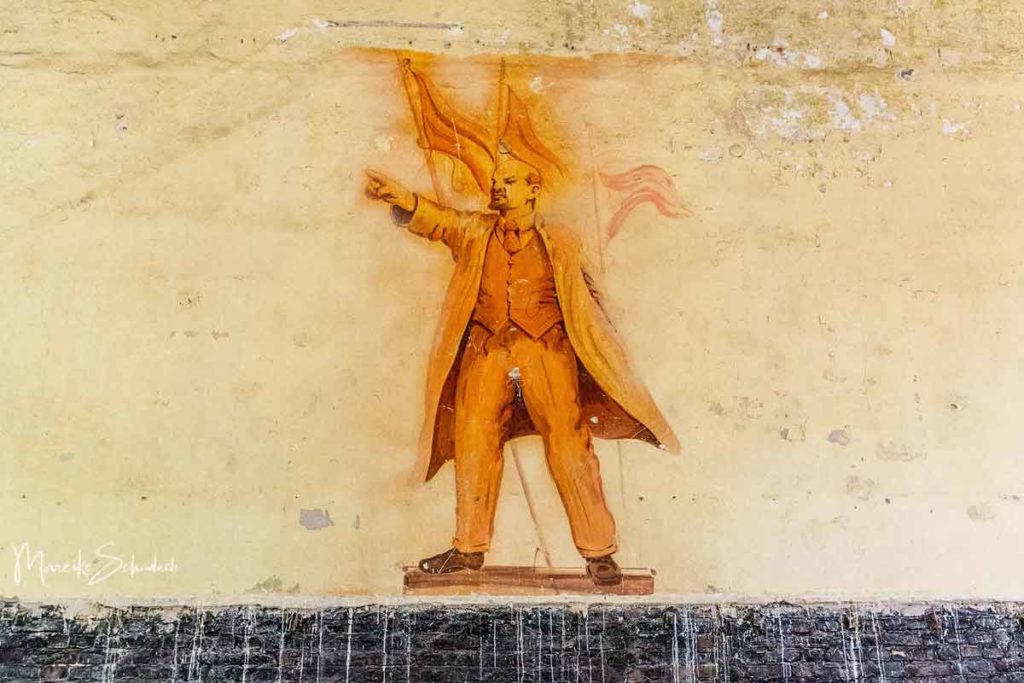
Not all of the buildings are still visible today. The largest and best preserved buildings are the dining hall, the swimming pool, the gymnasium and some of the residential buildings. The whole ensemble is under historical monument protection.
Visit: Unfortunately not possible anymore, the Olympic Village is being developed as a residential area. A walk through the residential area will hopefully be possible again later.
Address: 70 Rosa Luxemburg Alley, 14641 Wustermark
Directions to get there: Regionalexpress RE4 to Elstal, then about 2 kilometres on foot. By car you take the B5 in western direction. The Olympic Village is then signposted.
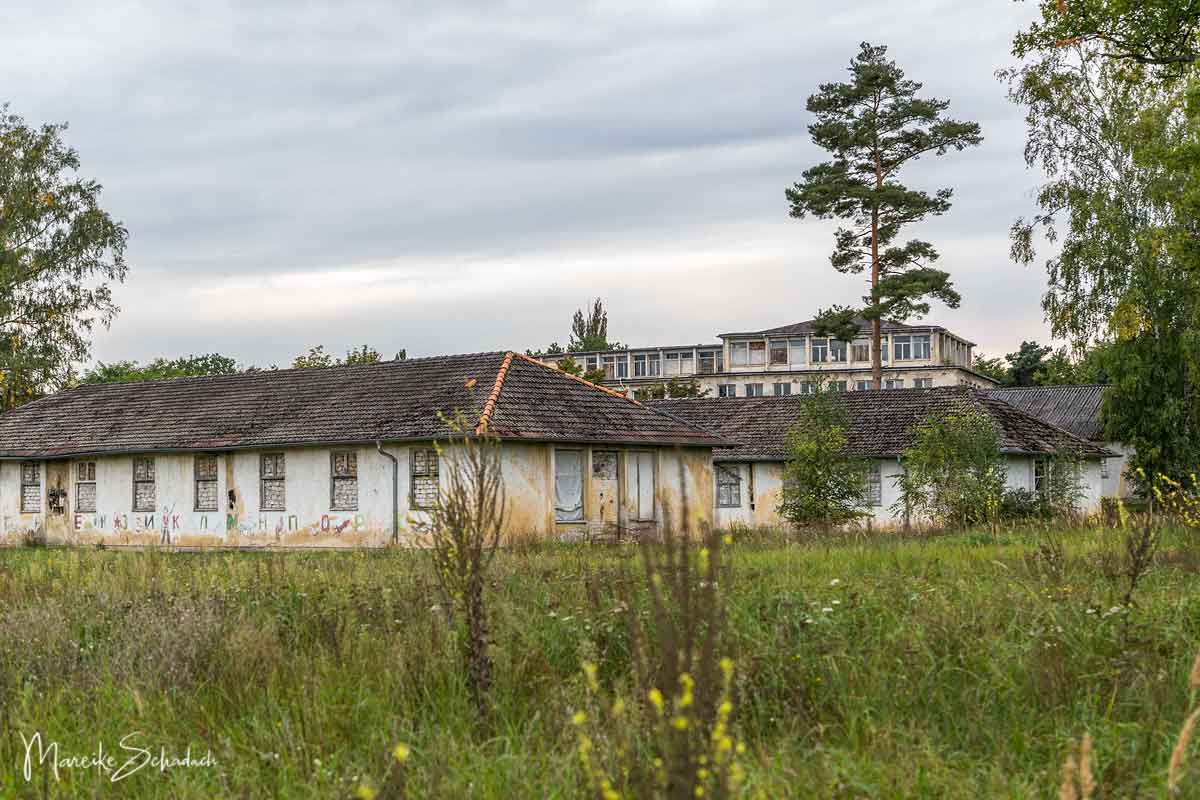
#7 Government and Stasi Hospital of the GDR in Berlin-Buch
Isolated and hidden in the woods near Berlin-Buch is the once largest hospital in Europe. The former government and Stasi hospital of the GDR comprises two huge building complexes from the 1970s, bunkers and an extensive park.
Only the "highest" management level was treated here: representatives of the Ministry for State Security (MfS), the Central Committee of the SED and the GDR Politburo. High-ranking state guests and their relatives were also allowed to be received. In contrast, the neighbouring Stasi hospital was a secret facility and reserved for Stasi staff. Patients were to be provided with everything they needed. Therefore, everything was equipped with the most modern technology and medicine from the West. There were especially luxurious special areas for members of the Council of State.
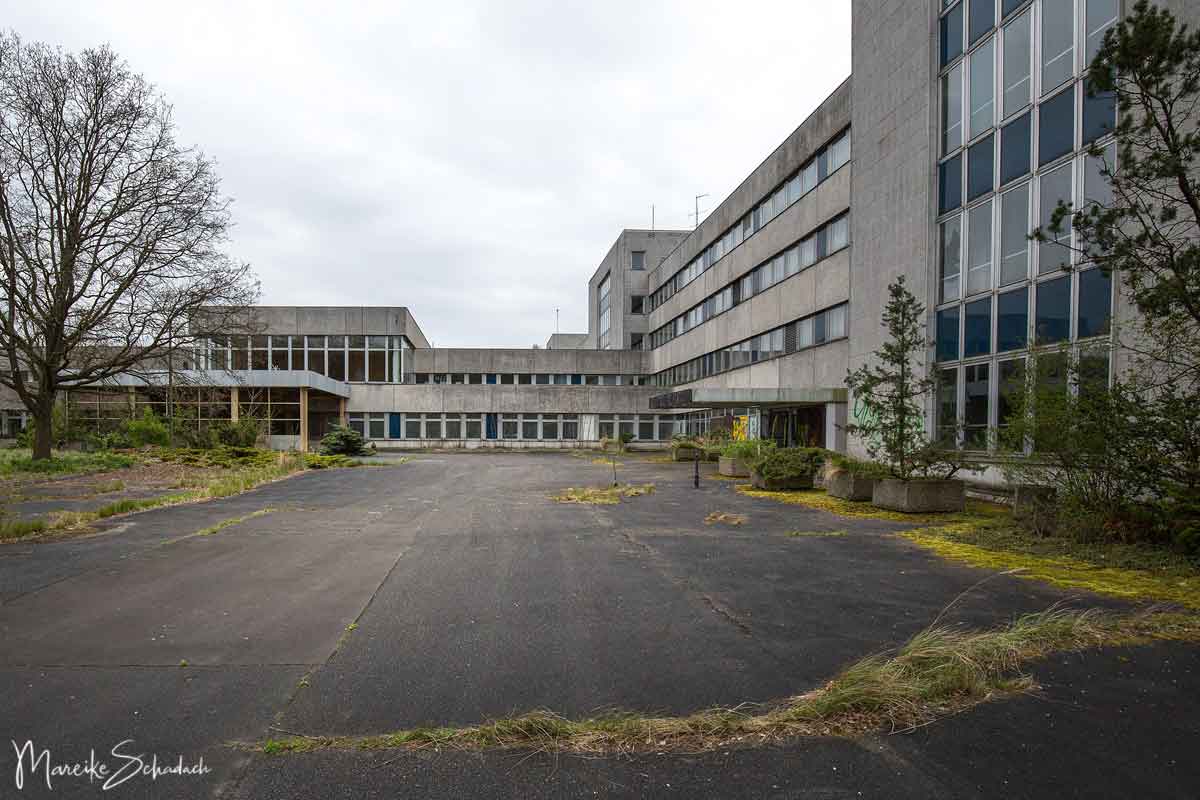
After the reunification of Germany, the hospital continued to be operated by the Helios Clinics from 1990 onwards. It was no longer reserved for functionaries - now everyone was treated here. The largest hospital in Europe was built. At the same time, however, the Helios Kliniken built a new clinic. After its completion in 2007, the old hospital complexes were finally abandoned. Since then they have stood empty and are a huge lost place in the north of Berlin.
Inside the abandoned place, there are still numerous facilities from the hospital operation: operating rooms, the intensive care unit, a swimming pool, therapeutic baths and a canteen kitchen with dining hall. The technical building installations such as the heating plant and the control centre are also still in good condition. Bunker facilities are accessible in the basement. Furthermore, there are still many details from the GDR and post-reunification period to be discovered in both buildings.
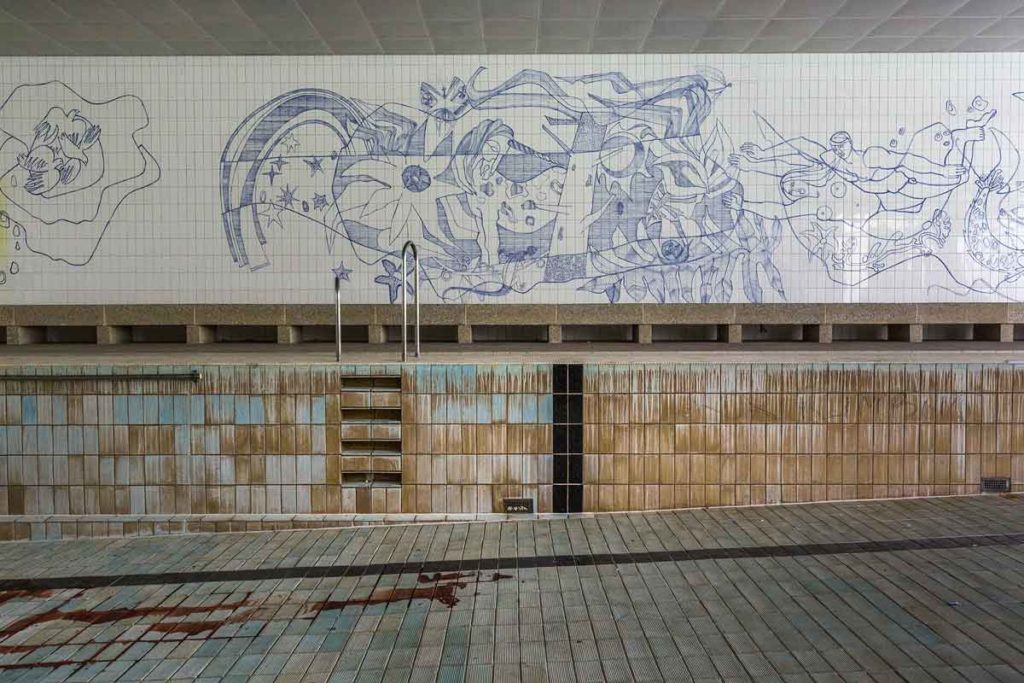
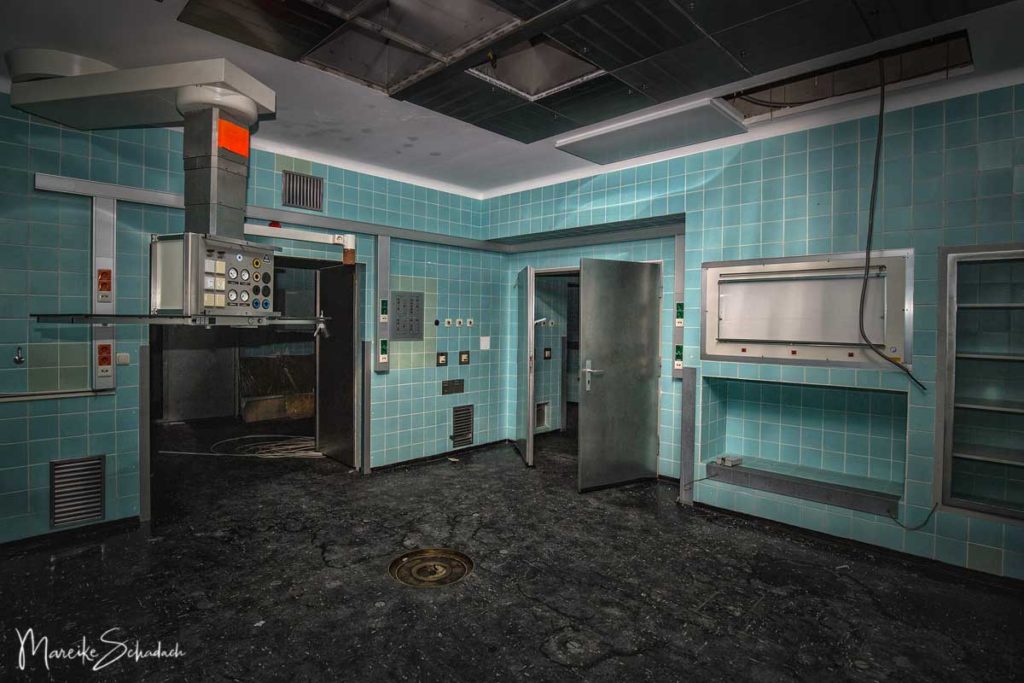
Visit: Go2Know offers photo tours from time to time.
Address: Hobrechtsfelder Chaussee 100, 13125 Berlin
Directions to get there: From Buch S-Bahn station it is about 20 minutes on foot.
Long-tested and much loved: my three companions on photo tours to lost places: the lightweight carbon tripod CT-5C I from Rollei*the cleaning kit from Rollei*and my indestructible camera backpack, the Flipside from Lowepro*.
#8 Tempelhof Airport
Is Tempelhof Airport a Lost Place? If you look at the colourful hustle and bustle on the former airfield, it doesn't look deserted at all. Parts of the listed airport building are also still used as a venue for events. But the heart of the airport - the terminal building, the General Aviation Terminal (GAT) and the baggage carousel - has come to a standstill. The last passengers were handled here in October 2008, and the last aircraft took off in November. The airfield has been open to visitors since 2010 and bears the promising name “Tempelhofer Freiheit”. The former airport building can also be visited during guided tours .
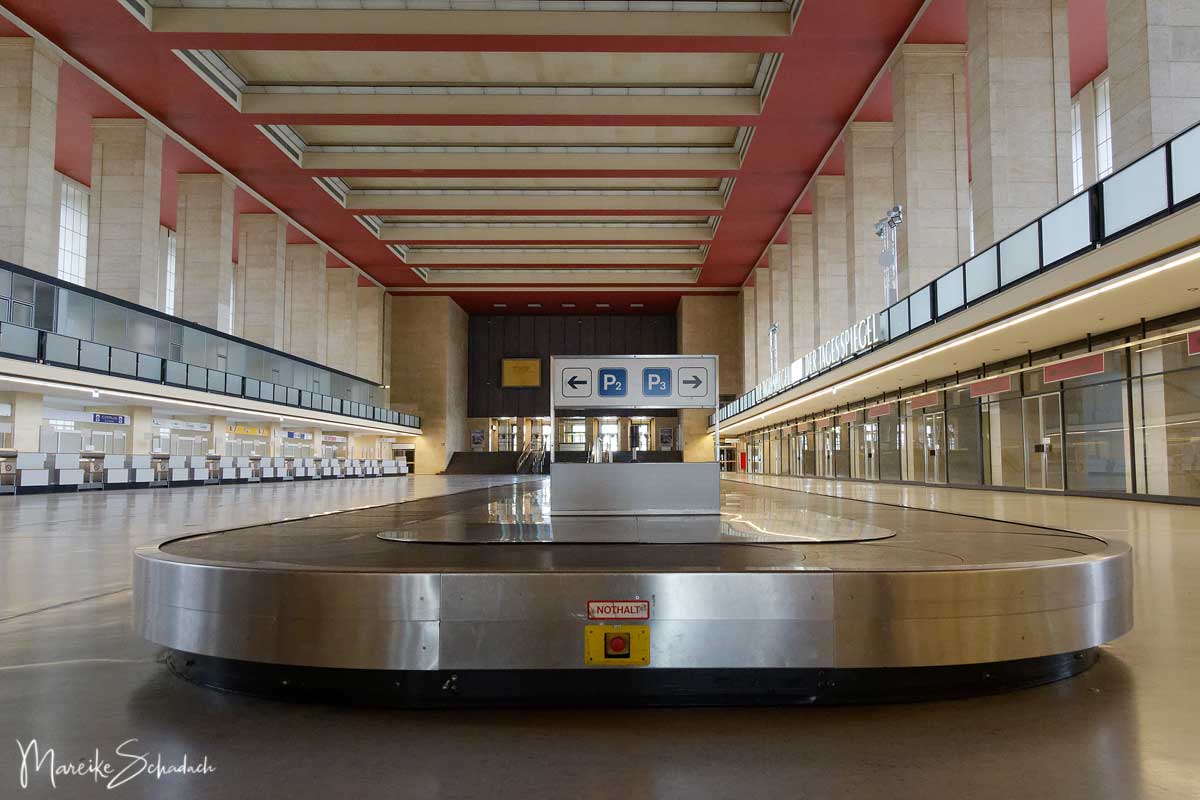
A little History of the Airport Tempelhof
Tempelhof Airport began scheduled flights in 1923 and was one of the first commercial airports in GermanyDuring the Second World War it was used as an aircraft factory with underground production facilities and as a military hospital. After the end of the war, the Militärstützpunkt “Tempelhof Air Base” was established here. During the blockade of West Berlin by the Soviets from June 1948 to May 1949, Tempelhof Airport became famous. The Berlin Airlift ensured the supply of food to West Berliners. During these months, aircraft took off at 90-second intervals. The term “Rosinenbomber”also originates from this period: pilots threw candy out of the cockpit windows with small parachutes made of handkerchiefs for the children.

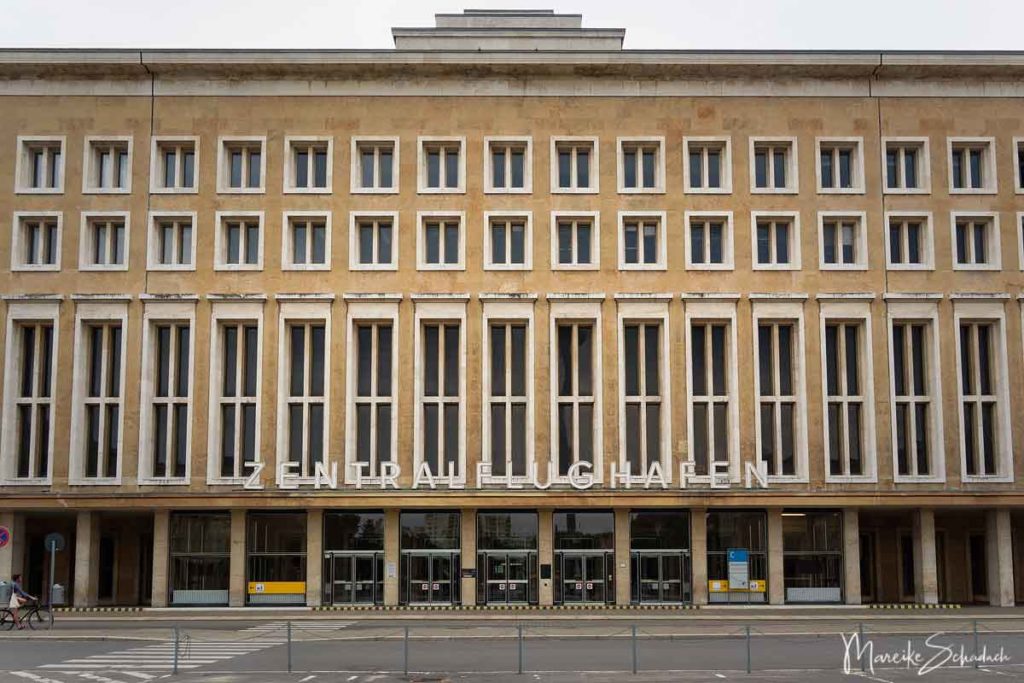
Superlative Architecture
The airport buildings were constructed between 1934 and 1941 according to the plans of the architect Horst Sagebiel. The monumental style of National Socialism and the cladding of the facades with shell limestone gives the airport a massive appearance. But what is most impressive is the size of the building: the arch-shaped hangars extend over 1230 meters. Even today it is still the longest continuous building in Europe. In the middle of the hangars is the terminal and gate. From here the two-kilometre long oval airfield opens up.
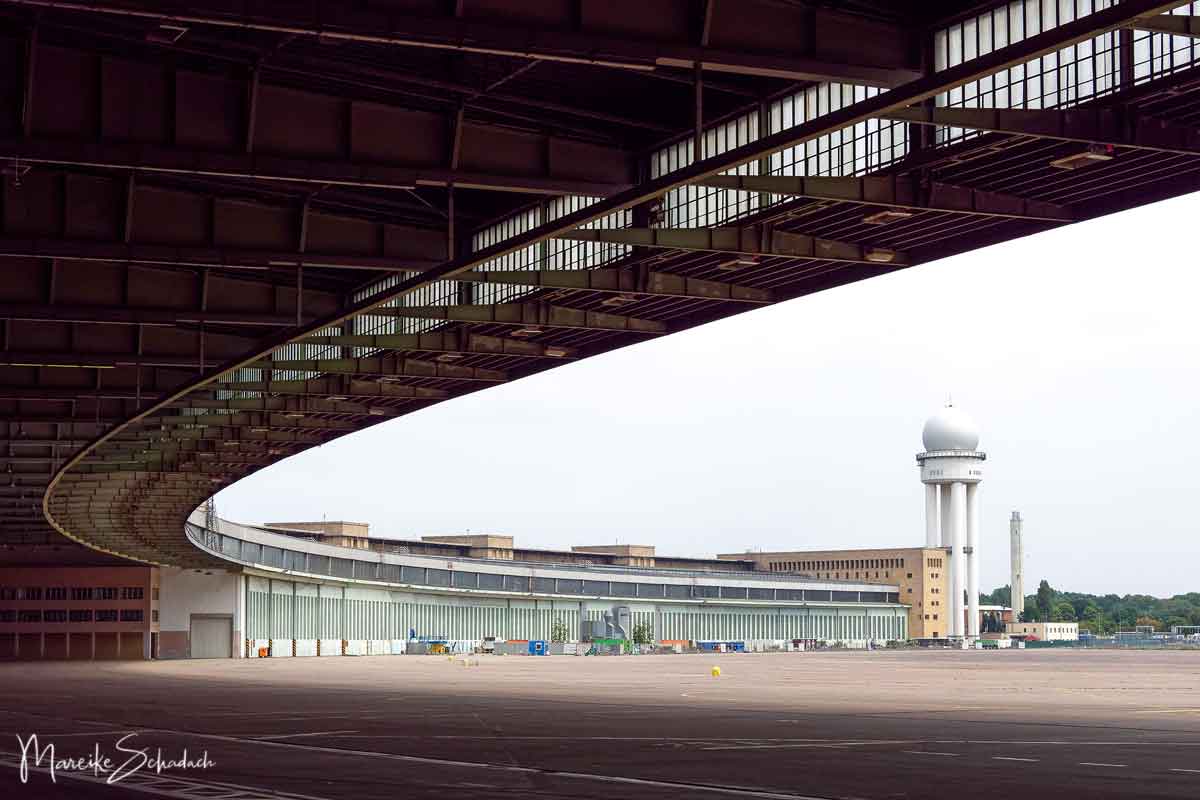
Due to the war, parts of the airport were never finished. For example, the grandstand on the roof of the airport hall, planned for 100,000 spectators, remained unfinished. Also the 13 stair towers leading up to the roof are still in the shell construction.
Visit: There are photo tours and various guided tours of Tempelhof Airport, also in English.
Address: Platz der Luftbrücke 5, 12101 Berlin
Directions to get there: The best way is to take the underground U6 to Platz der Luftbrücke.
#9 Former Iraqi Embassy in the GDR
Enclosed by a high fence and surrounded by an overgrown garden stands the former Iraqi Embassy. However, the tall trees only partially reveal the rear façade of the prefabricated building, which was built in 1974 You have a better view of the exposed aggregate concrete facade at the front of the building. Here a wide staircase leads up to the entrance. Protruding balcony parapets and clinker brick façade sections are particularly striking here.
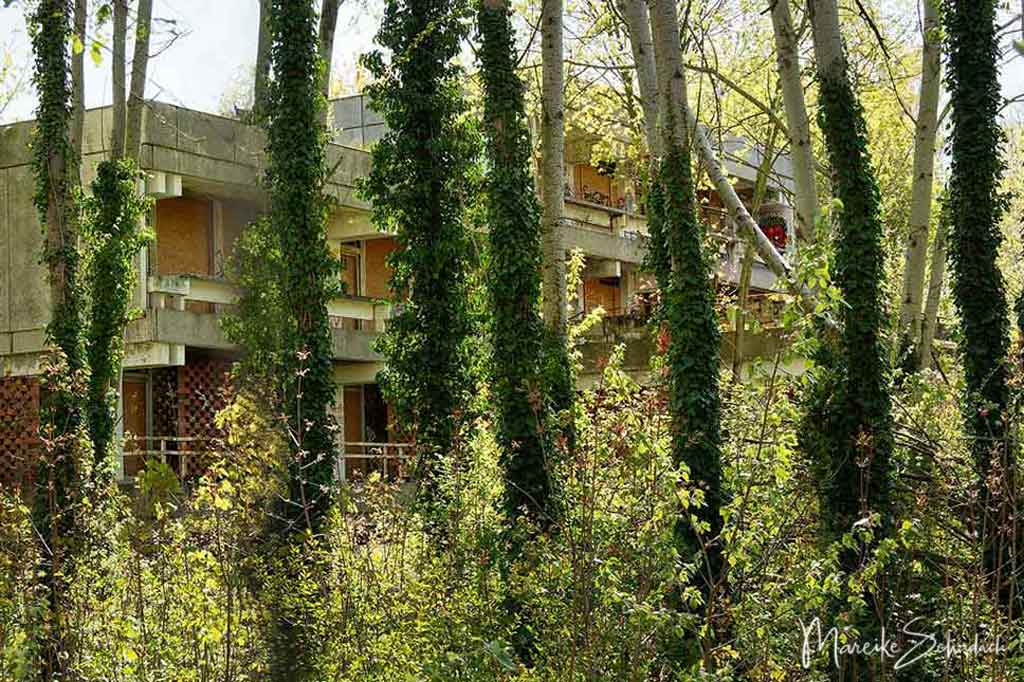
Between 1974 and 1991, the GDR Iraqi Embassy was located in the former diplomatic quarter of Pankow. During the Iraq war, however, it became known that the embassy offered shelter to terrorists. There was even an explosives warehouse (source Wikipedia). The ambassador and his staff had to leave Germany as a result. They left behind furniture and documents. Since 1991 the embassy building has been abandoned and is increasingly decaying.
And what will be the future of the building? There was the idea of converting it into a cultural centre. But nothing has happened yet. Although Germany is the owner of the land, Iraq owns the building. And Iraq has an exclusive, unlimited right of use. This does not make future use any easier.
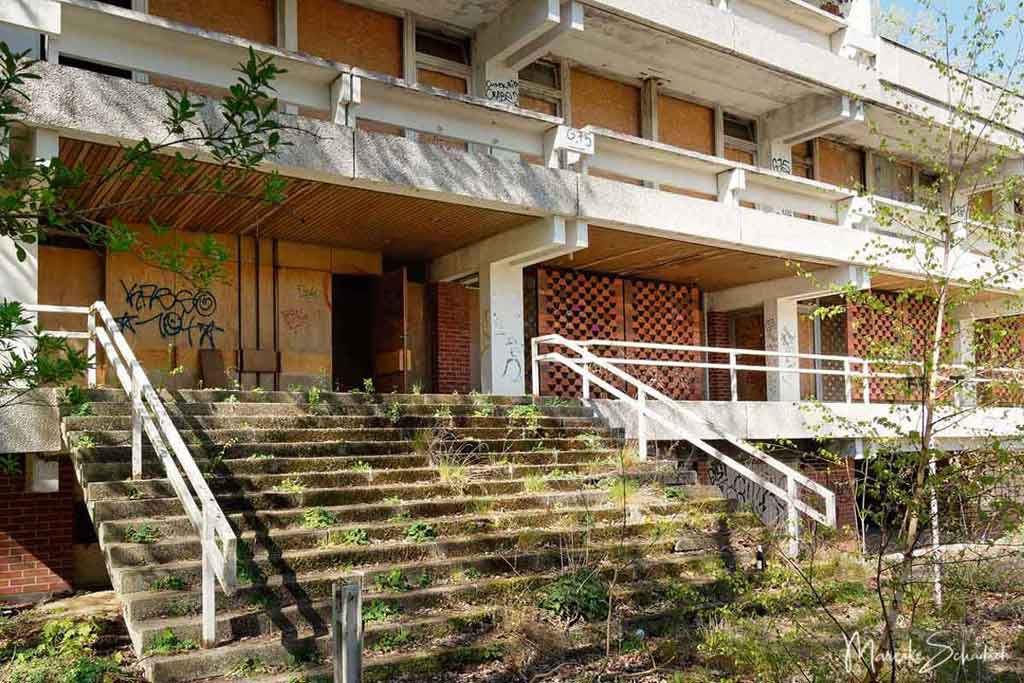
Visit: No admittance. You can only view the building from outside through the fence. This is best done when the trees have few leaves.
Address: Tschaikowskistraße 51, 13156 Berlin
Directions to get there: to S-Bahn station Schönholz (S1, S25, S26), from here 15 minutes walk
#10 Rüdersdorf Feed Phosphate Factory
Lost Place and Environmental Sin
It was the year 2000 and we had just finished our visit to the Museum Park Rüdersdorf. Attracted by high chimneys and driven by our curiosity we discovered several empty factory buildings next to the museum park. And suddenly we were in a place that captivated and at the same time horrified me like no other. I can hardly describe what I saw: Barrelswere stored in a hall. Some had tipped over, the contents seeping into the ground. In another building, a gel-like substance filled several basins. But the most severe was the laboratory building. The windows had been smashed. On the laboratory tables there were chemicals, the containers partly tipped over, broken and leaked. A greasy layer spread out on the floor. Titration systems were set up on the tables, they were still filled with chemicals. Next to them there were measuring instruments that I still knew from my practical training in chemistry. It looked as if the lab assistants had gone for their lunch break and just didn't come back.

One week later we came back. This time with a single-use camera - hardly imaginable, but at that time I had no camera! We wanted to show the photos to the responsible environmental authority. Because with all the love for Lost Places - this one couldn't stay like that. It definitely was at the expense of the environment. But when we entered the area, something had already happened: The barrels were removed and the windows of the laboratory building were nailed shut.
Recently, I read that this was one of the biggest environmental scandals in Brandenburg. There are said to have been about 80 barrels of oil and oily liquids stored here. Some of it was already leaking and leaking uncontrollably. In addition, there were chemicals that were still on the shelves in the laboratory or were already reacting on the floor.
History of the Rüdersdorf Chemical Plant
The history of the Rüdersdorf chemical plant dates back to 1900. After the Second World War it was largely dismantled by the Soviet occupying forces. From 1950 onwards, the remaining rotary kilns were finally used to produce feed phosphate . It was marketed throughout Europe under the name RÜKANA. The plant was continuously expanded, new furnaces were put into operation and production reached its peak in 1988. After the German reunification, sales dropped and finally led to the discontinuation of production and plant closure in 1999. Demolition work was started but stopped again. Since 2000, the site has been brokered by Studio Babelsberg's location scout for film productions . There are no further plans for use. The contaminated sites are probably too deterrent for investors.
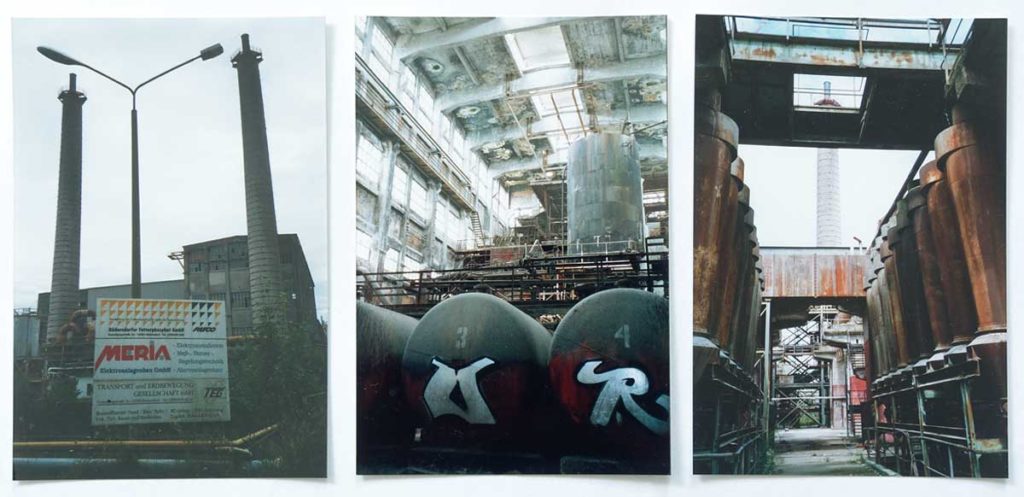
Visit: No admittance. Some time ago the public school Volkshochschule had offered a photo workshop here. Maybe there will be an offer again. Apart from that: From the shaft furnace battery of the museum park Rüdersdorf (6 Euro entrance fee) you have a good view to the old chemical plant.
Address: Gutenbergstraße, 15562 Rüdersdorf near Berlin
Directions to get there: Take the S3 to Friedrichshagen S-Bahn station, then continue with tram line 88 to Rüdersdorf, Marktplatz. From here you walk about 30 minutes to the shaft furnace battery.
#11 Locomotive Shed Pankow-Heinersdorf
The former round locomotive shed of the railroad depot in Pankow-Heinersdorf is a beautiful but unfortunately also extremely decayed lost place. The round building designed for 24 locomotives was built in 1893. It is the last and also the largest of its kind.The brick building hides a locomotive turntable inside, locomotives used to be repaired here. Besides the impressive locomotive shed, there are other brick buildings and an open air signal box on the site.
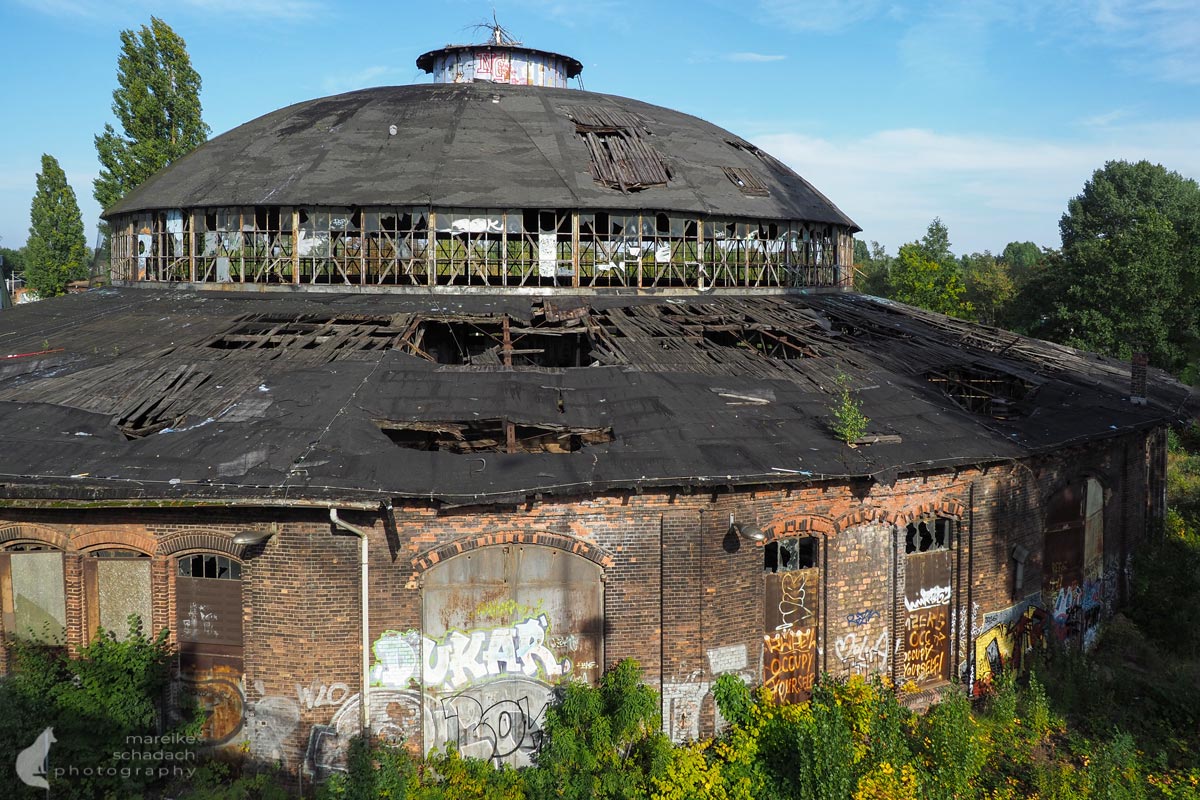
Since the end of the 1990s, however, the depot has been abandoned and is increasingly falling into disrepair. This can be seen particularly clearly on the domed roof of the locomotive shed, which is now in danger of collapsing. It is raining in through holes in the roof and the first trees have taken root on the roof.
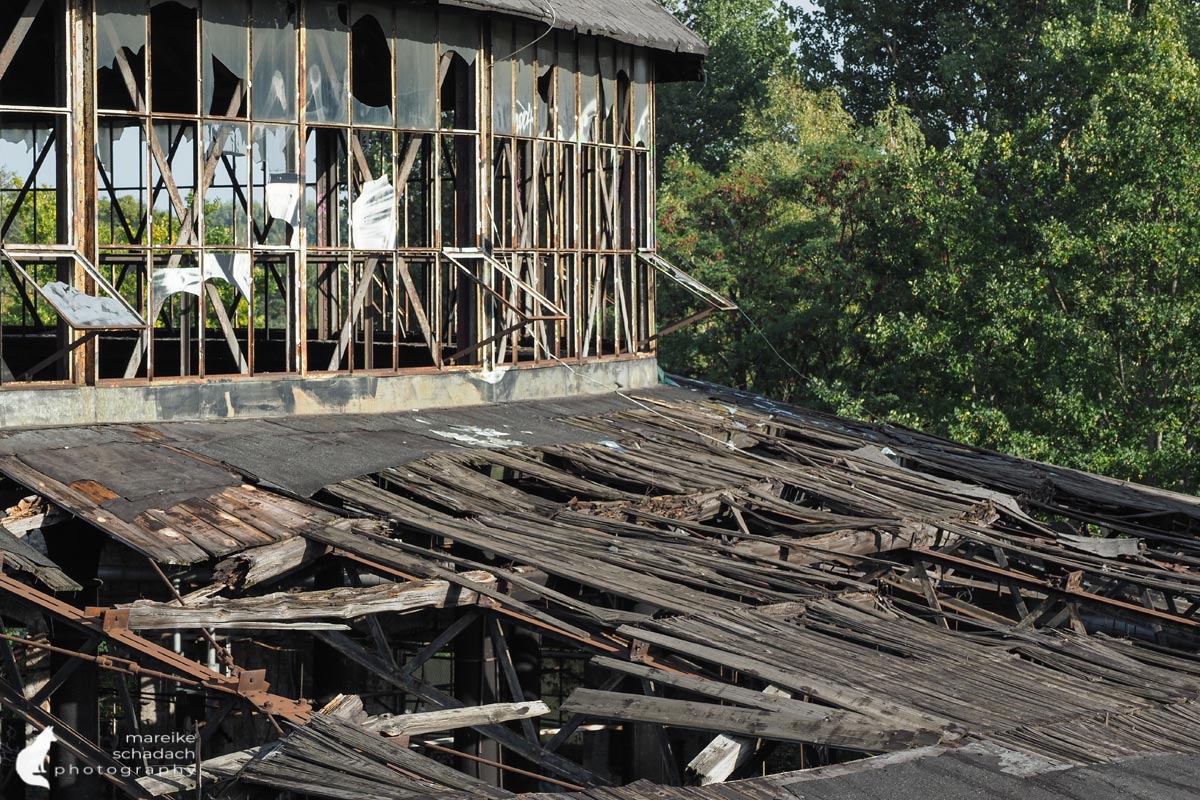
At the end of 2009, the Berlin furniture retailer Kurt Krieger acquired the approximately 40-hectare station site. He wants to build the new "Pankower Tor" urban district here with 2,000 apartments, furniture stores and schools. The locomotive shed was to be demolished for this purpose. But this was prevented by a court order and redevelopment measures were demanded instead. But this demand has unfortunately been ignored by the owner so far. It is unclear how long the historic, listed building from the turn of the century can continue to withstand decay.
Visit:The buildings are fenced and it is forbidden to enter. You have the best view of the lock shed from the S-Bahn station and from the road bridge over the railroad tracks.
Directions to get there: The Lockschuppen is located directly at the S-Bahn station Pankow-Heinersdorf.
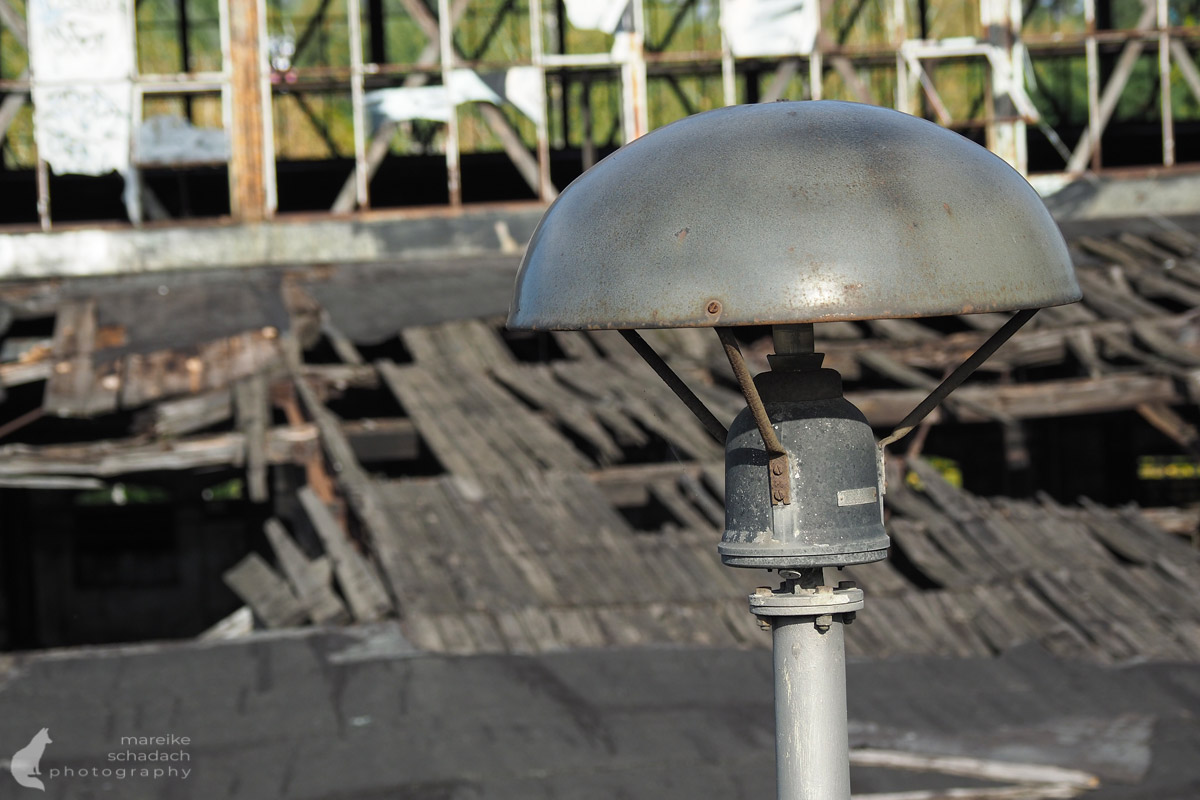
#12 Airfield Werneuchen
Werneuchen Airfield was built as a Luftwaffe training base starting in 1935. Construction of the actual facilities began in the spring of 1936 and was completed in November of the following year. After World War 2, the airfield was further expanded and used for military purposes by Soviet troops until their withdrawal in 1993. The airfield is still a special traffic airfield, where aircraft weighing up to 5.7 tons are allowed to land.
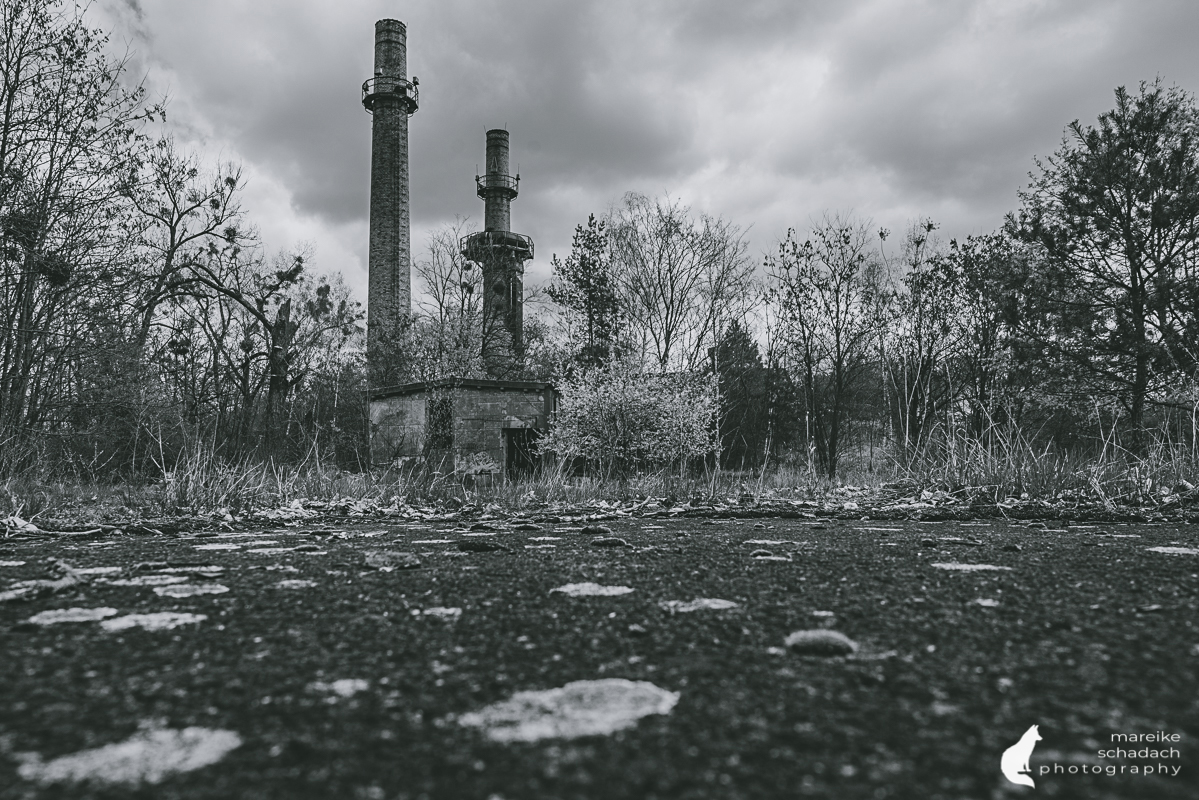
Due to illegal car races on the airfield and also on the runway, the runway was divided to prevent these in the future. For this purpose, an approximately 0.7 m high earth wall was heaped up, which divides the runway into a 900 m long western and a 1499 m long eastern section. Only the eastern section is still permitted for flight operations.
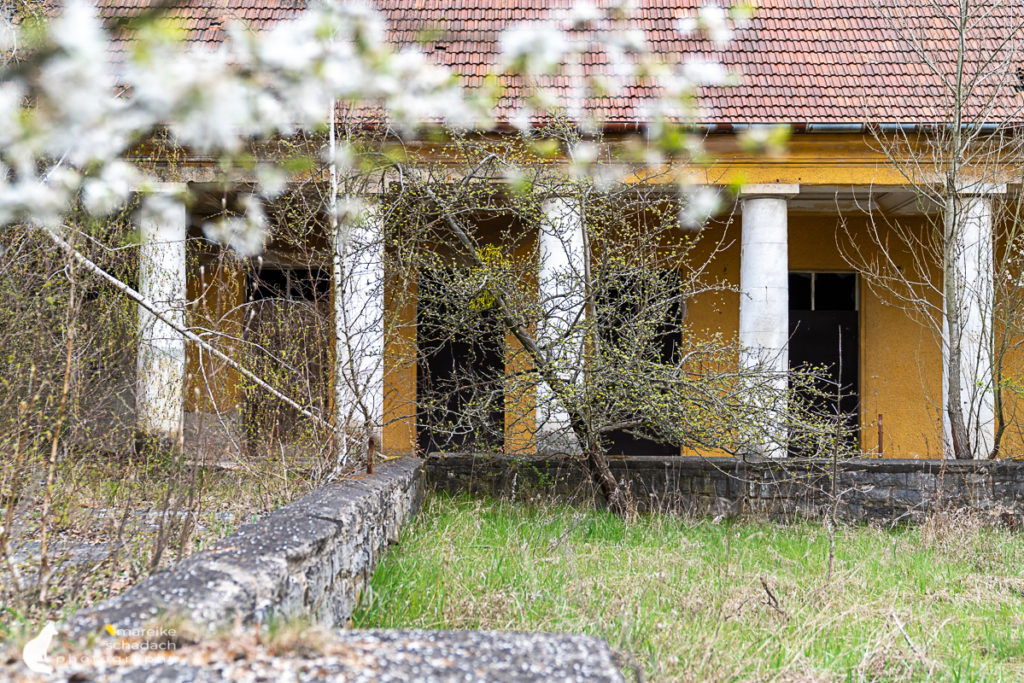

In the vicinity of the runway there are still old, graffiti-covered, rusty hangars, a ruin of a power plant, a high bunker, a former casino and other buildings and ruins.
Visit:The buildings are not fenced, yet it is forbidden to enter because of the danger of collapse. But even from the outside the buildings are impressive and offer many great photo perspectives.
Directions to get there: At the end of Klawitterstraße in Werneuchen, a dirt road will lead you to the site.
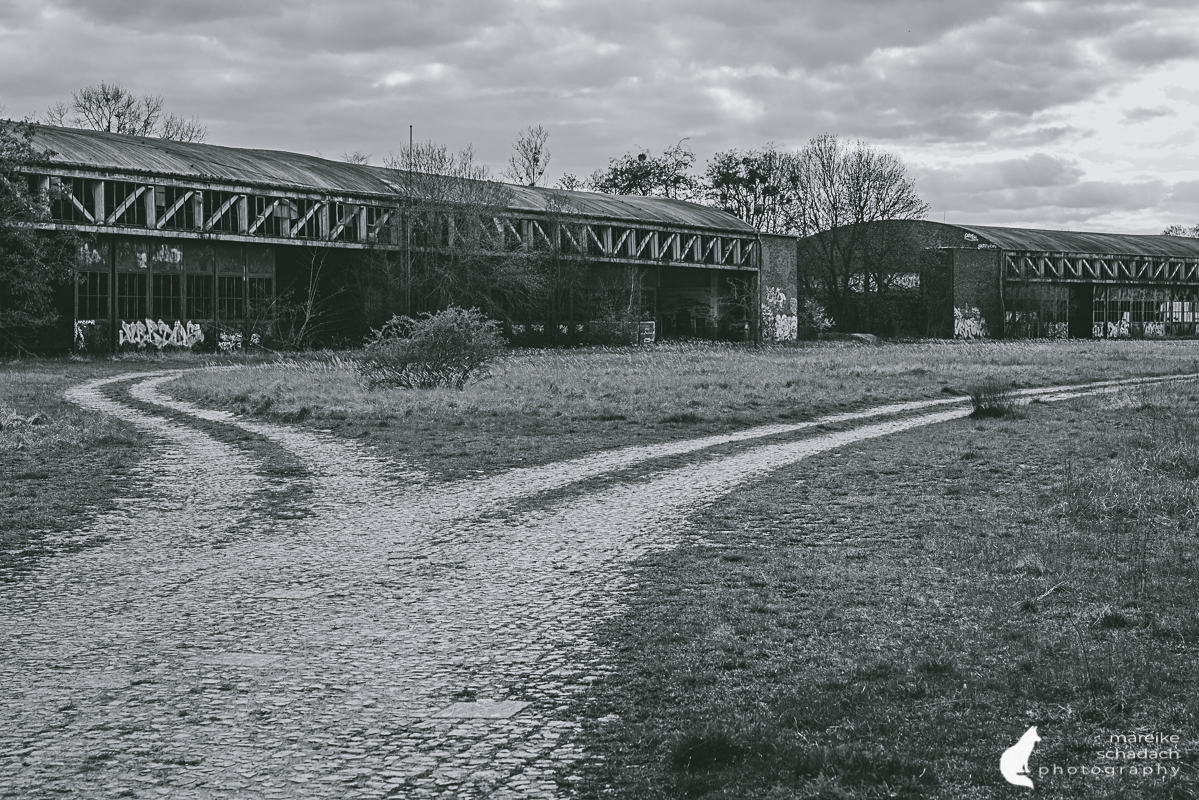
#13 Rangierbahnhof Tempelhof auf dem Südgelände Schöneberg
As early as 1879, the railroad repair workshop was built on Schöneberg's Südgelände (at that time still on the outskirts of Berlin). Ten years later, the Tempelhof shunting yard was opened here. After further expansion efforts, this developed into Berlin's most important cargo hubby 1945. Here, on about 60 parallel tracks, up to 130 trains of the Berlin-Anhalt and Berlin-Dresden Railways were regrouped daily. In 1952, however, train service was discontinued due to the changed political situation. Only workshop operations continued until the early 1990s.

Today, numerous facilities of the old shunting yard are still preserved, including a turntable, tracks, a locomotive hall, a steam locomotive or the all towering 50 meter high water tower.
Nature has reclaimed the fallow railroad areas. The tracks in particular are heavily overgrown. Over time, rarer species have also settled on the southern grounds. With the establishment of the nature park in 2000, the areas were placed under nature and landscape protection. Paths lead through the area, there are information boards, art objects and a small café. In the future, the locomotive shed will also be usable as a hall for events.
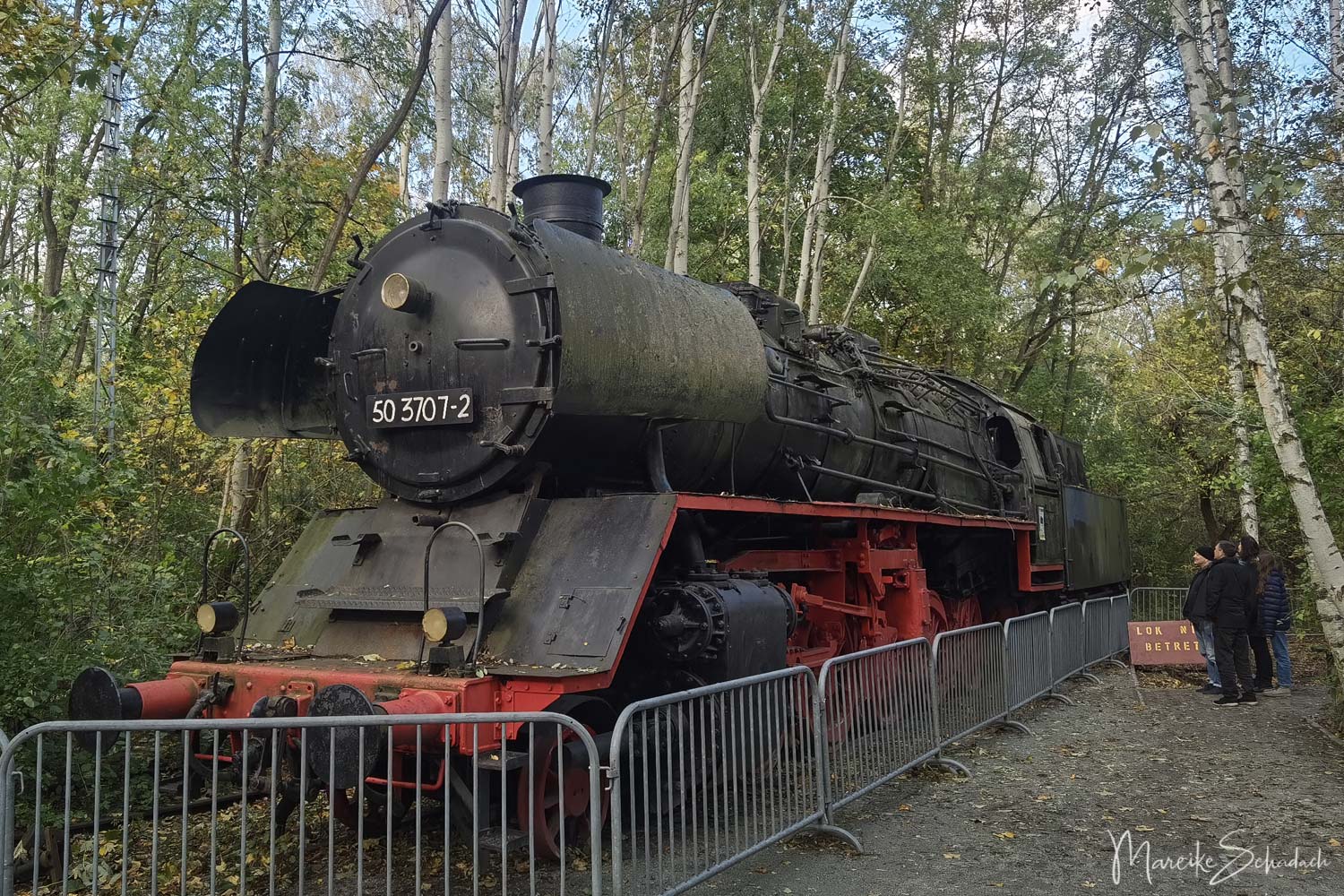
Visit: An entrance fee of 1 euro is charged for the preservation of the park, payable at ticket machines at the entrances. Opening hours: Daily from 9am. March and October until 6pm, April and September until 8pm, May to August: until 9pm; November to February: until 4pm.
Address: The Südgelände extends along the S-Bahn line between Südkreuz S-Bahn station and Priesterweg S-Bahn station. There is one entrance at the southern and one at the northern end of the park.
Directions to get there: S2 and S25 to S-Bahn station Priesterweg
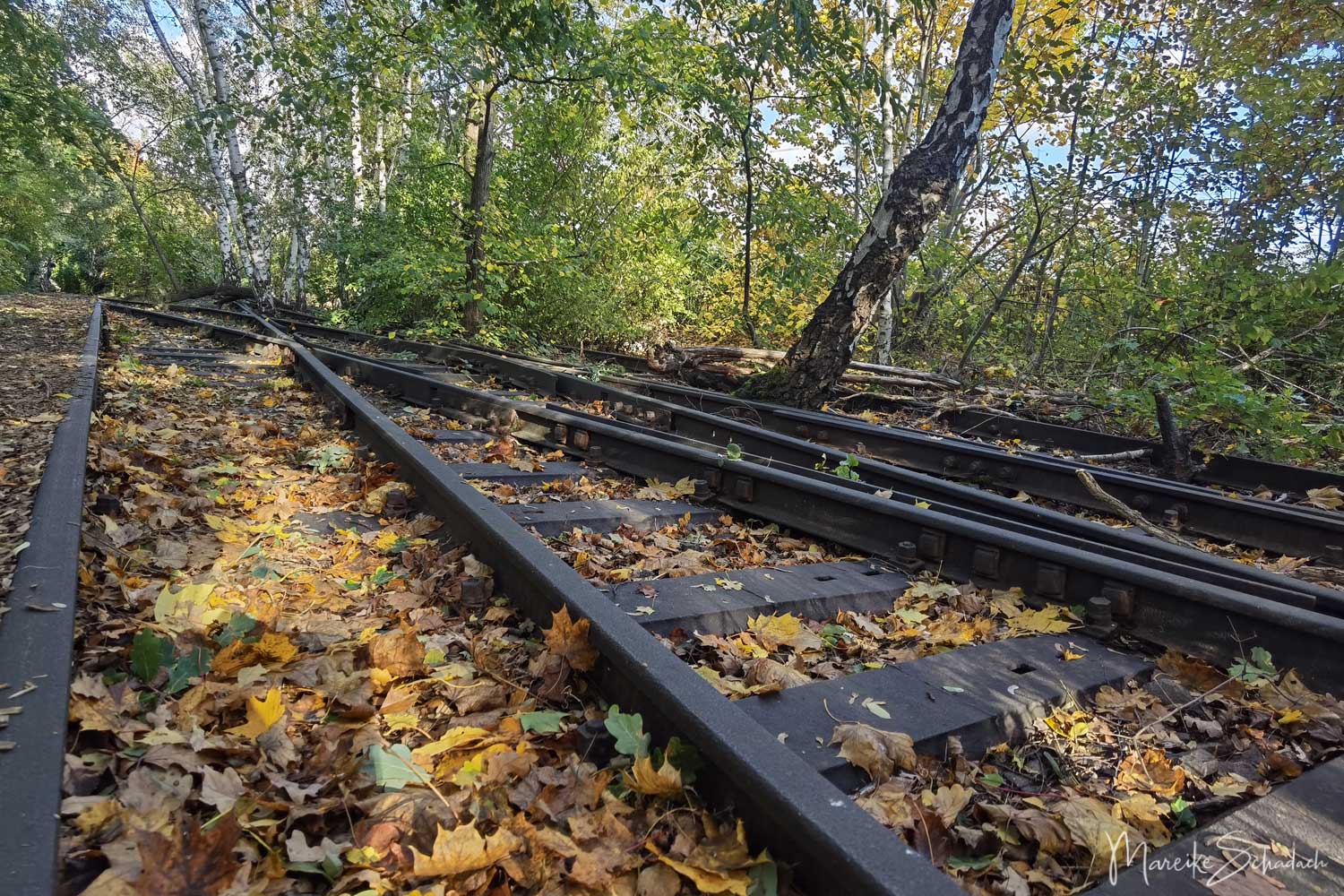
Stadtbad (City Bath) Lichtenberg
Stadtbad Lichtenberg (also known as Hubertusbad) is a bathing and swimming establishment opened in 1928 on Hubertusstraße in the Berlin district of Lichtenberg. The bath was closed in 1991 due to technical deficiencies and has been empty since then. The search for an investor failed due to high monument protection requirements. A study also showed that reopening it as a municipal swimming pool would not be economically viable.
Now the Förderverein Stadtbad Lichtenberg e.V. is committed to preserving this unique cultural asset. The former Stadtbad is to be developed into a venue and meeting center. Some preliminary work has already been done, such as the removal of construction debris or the preparation of electrical connections and sanitary facilities. The charm of the old city baths is to be preserved in parts during the renovation. For example, the tubs from the bathing cabins, old mirrors and coat hooks in the changing rooms are to be retained after the remodeling.
In September 2021, this wonderful place was open to visitors as part of the Open Monument Day. More information and news can be found on the page of the Förderverein Stadtbad Lichtenberg e.V..
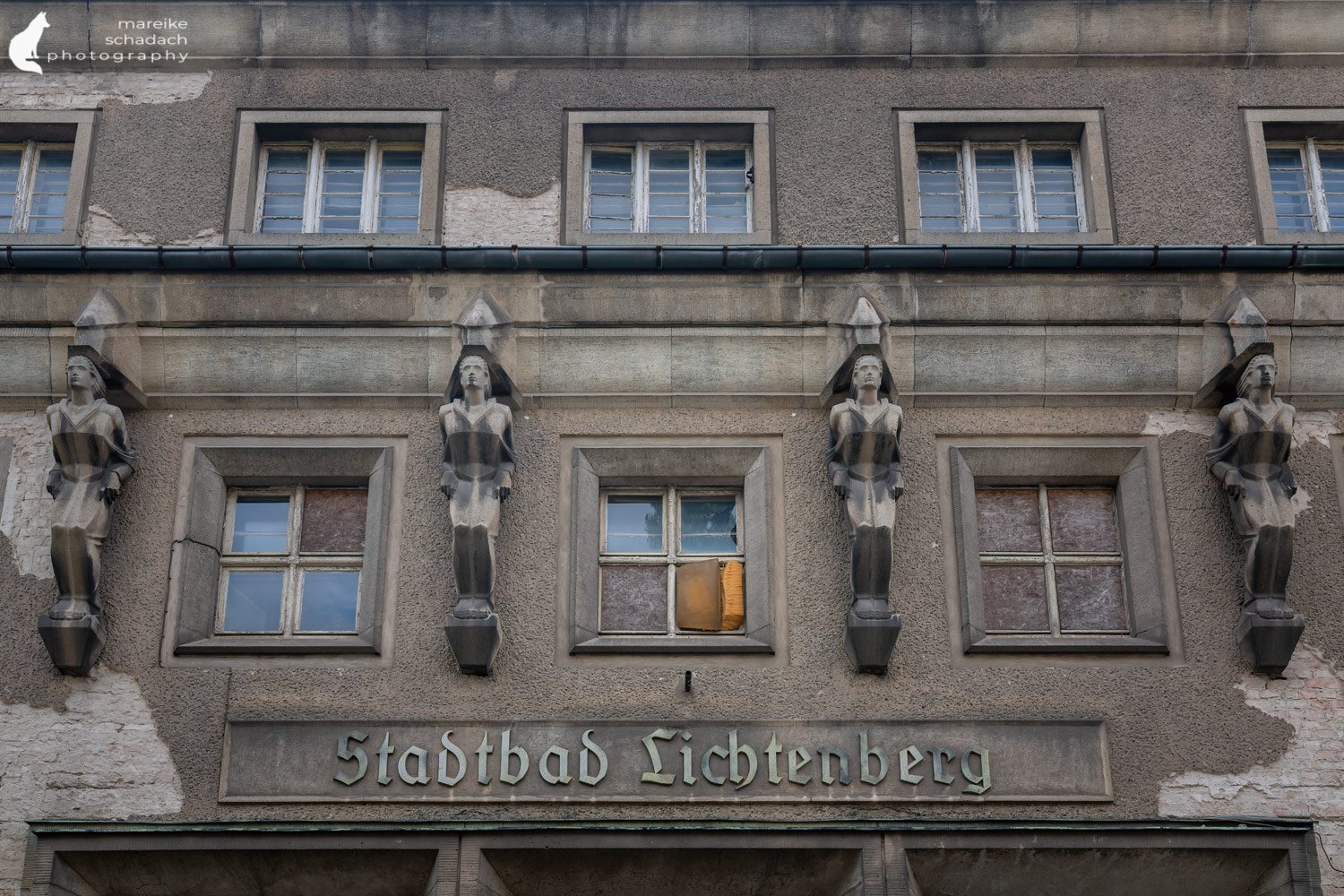


Visit: Usually closed. Visits may be possible on the Open Monument Day (annually in September). The pool is being developed as an event location. A planned opening date is not known to me.
Address: Atzpodienstraße 6, 10365 Berlin
Directions to get there: Directions to get there: U5 Magdalenenstraße
#15 Bucket Wheel Excavator 1473
In the southern Brandenburg town of Hörlitz, the Meurostolln lookout point is located directly on the edge of the former Meuro open pit mine. From the 27-meter-high observation tower, you can look out over the Eurospeedway Lausitz and the area of the former open pit mine. Where coal was once mined, solar panels now spread out. Next to them, a huge bucket-wheel excavator reminds of former times.
The bucket wheel excavator 1473 with the type designation SRs 1500 was manufactured in 1964/1965 by VEB Schwermaschinenbau Lauchhammerwerk. It was in service until 2002. Due to its blue color scheme, the excavator is also called the "Blue Wonder". In total, the giant is 50 meters high, 171.5 meters long and weighs 3850 tons. With its crawler undercarriage, it reached a travel speed of 6 meters/minute and could pump up to 5130 cubic meters per hour with its 10 buckets.

After the excavator was decommissioned in 2002, the cities of Senftenberg, Großräschen and Schipkau took over the Blue Giant. This was moved to its current location on the edge of the former open pit mine, fenced off and left to itself and vandals. Increasing decay made the prospect of using it for tourism increasingly unlikely. In early 2019, local authorities finally decided to scrap the excavator. However, many excavator fans campaigned for its preservation and eventually caused the State Office for the Preservation of Historical Monuments to place the bucket-wheel excavator on the official list of monuments. I could not find out yet what will happen to the excavator.
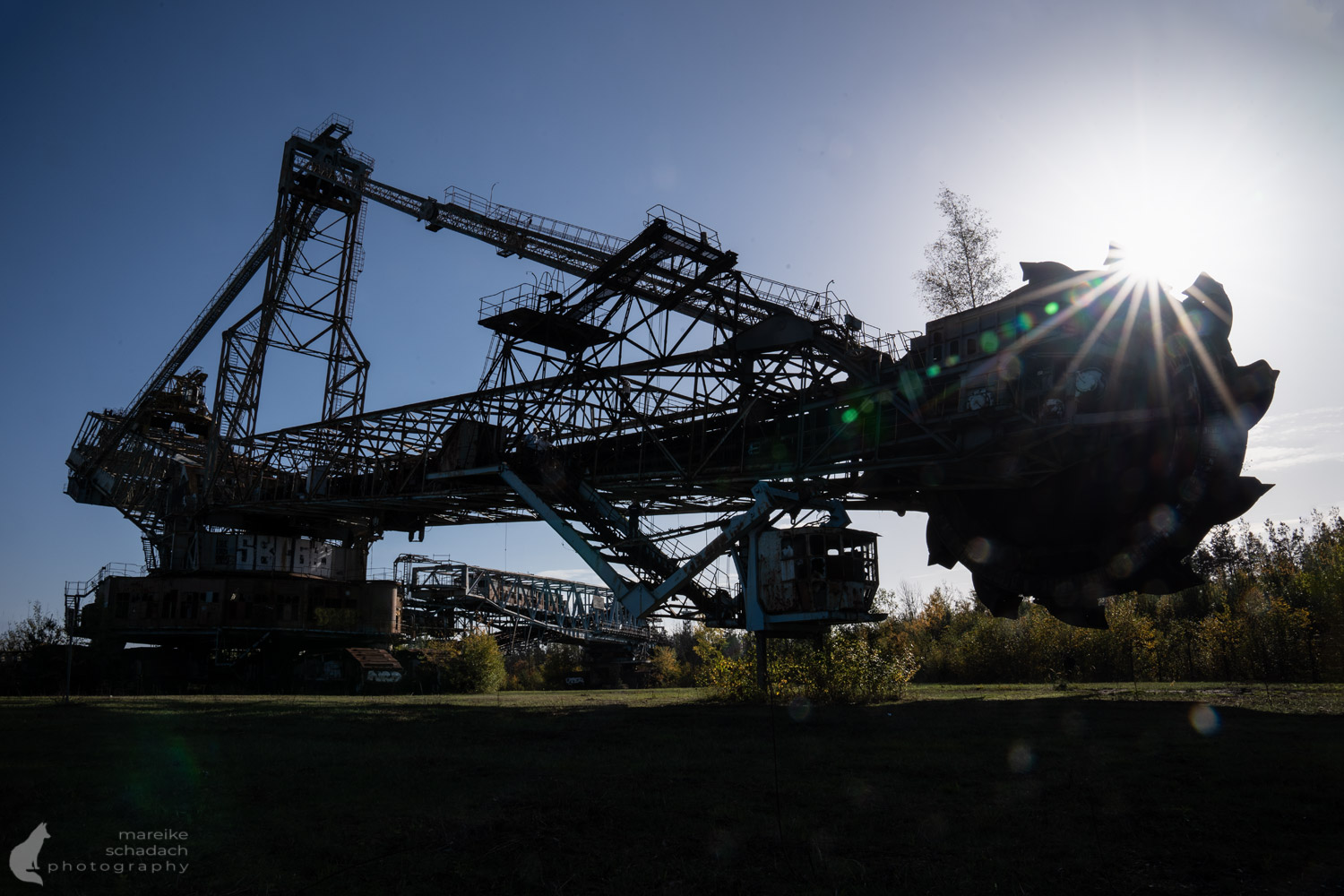
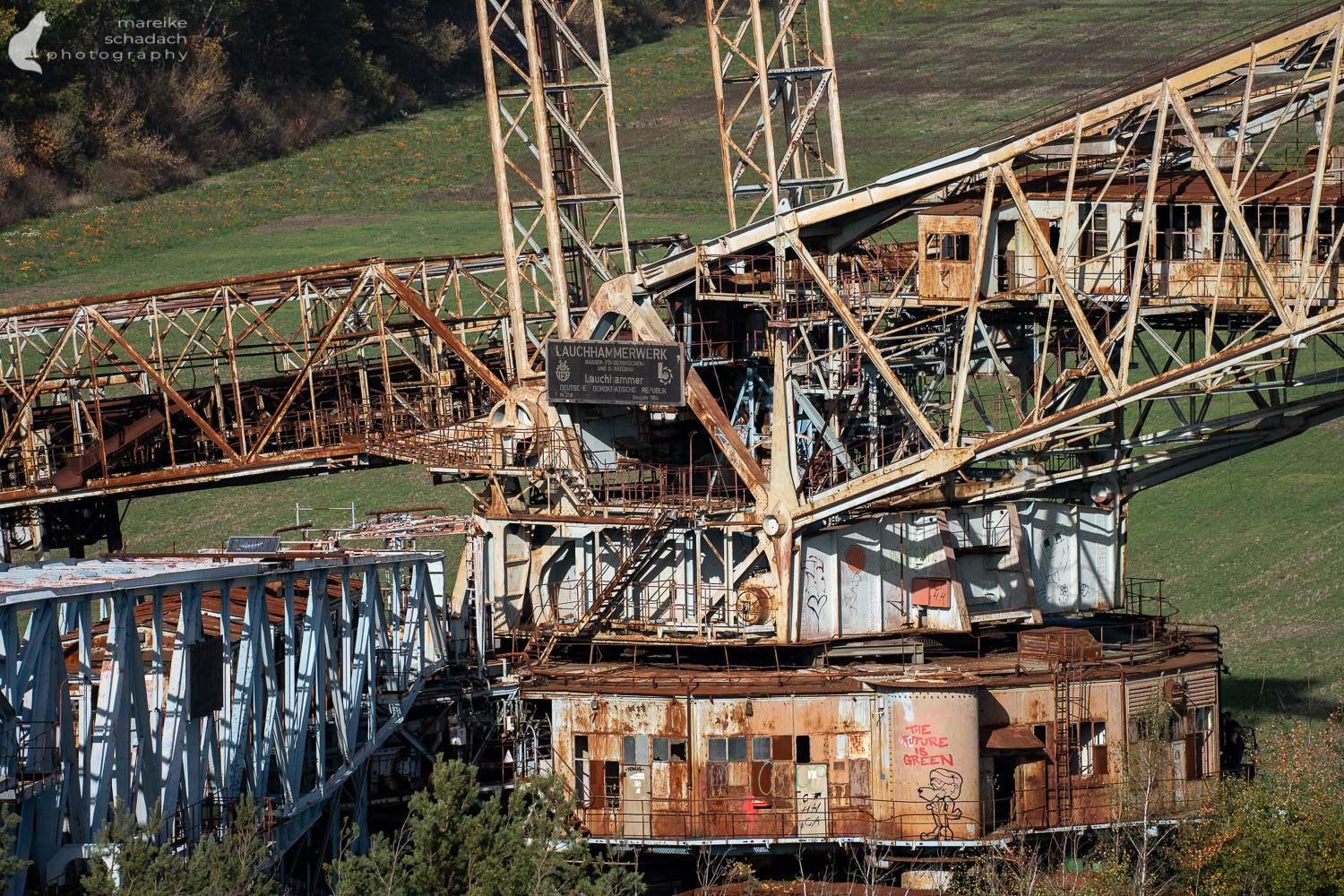
Visit: The bucket wheel excavator is fenced off, it is forbidden to enter it. It can be viewed either from the path leading once around the fence or from the Meurostolln lookout tower.
Address: Lange Str. 71, 01968 Schipkau
Directions to get there: Best by car.
#16 Haidemühl Glass Factory
The first Haidemühl glassworks was established in 1835 by the glass manufacturer Greiner. Hollow glasses, lampshades and perfume glasses were produced here. Several changes of owners followed, bankruptcy, reconstruction, cessation of operations due to the war, and finally modernization in the 1960s.
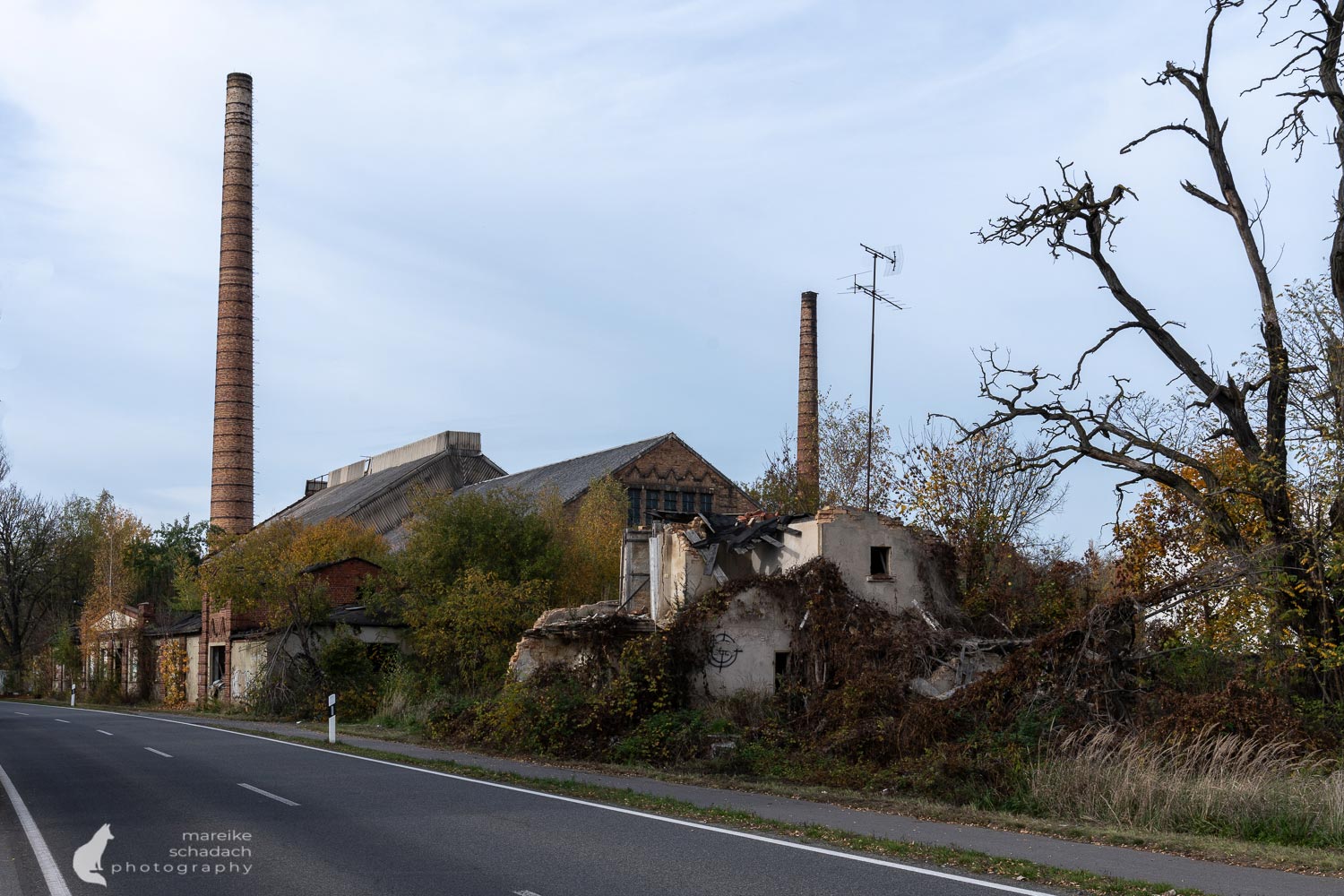
The Haidemühl glassworks was one of the most modern factories in the GDR. From 1971, it was also the only manufacturer of 0.5-liter milk bottles in the GDR and also exported to Western countries. Around 345,000 bottles are said to have rolled off the production line here every day. After reunification, the Treuhand took over the plant. As a result, production was stopped in 1992 and 1280 employees lost their jobs. The site was never properly cleared.
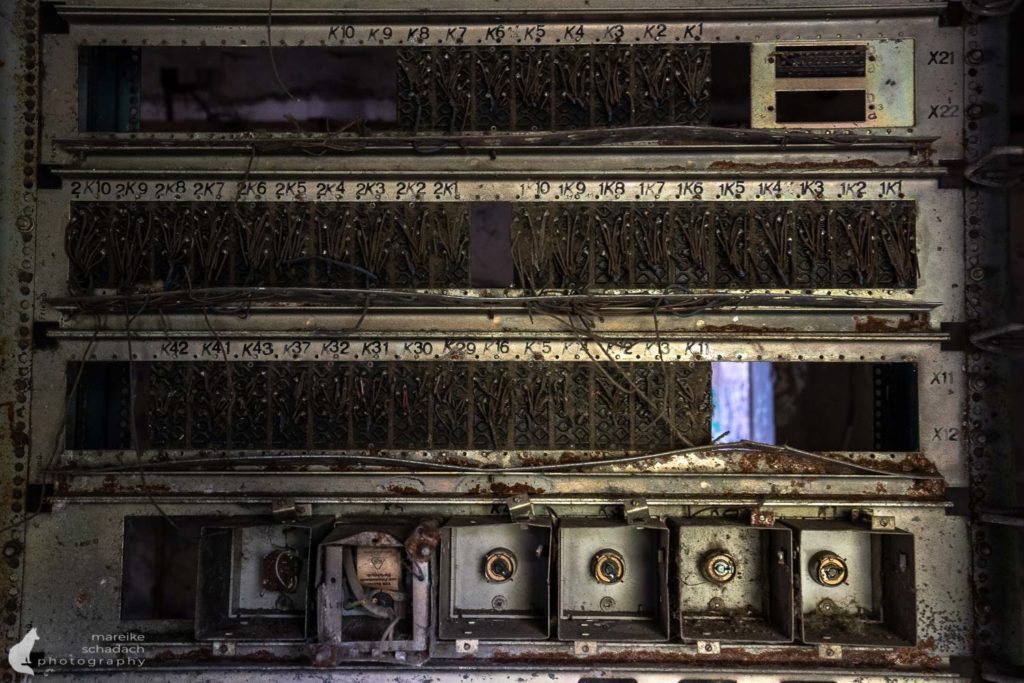
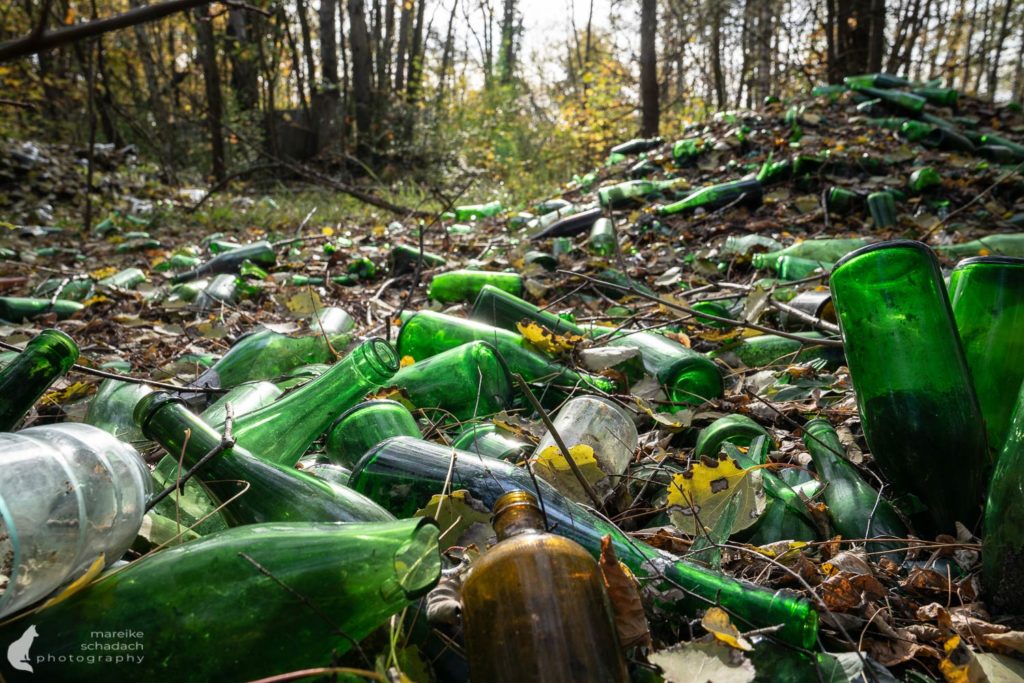
Tons of bags of potassium carbonate are still stored in the old halls, empty gas cylinders are piled up between the buildings and oily waste is rotting away in containers. The sight of the site of the old glass factory makes it hard to believe that you are in the middle of Germany. Nothing is locked, no prohibition signs and nobody seems to care about the place. The glass factory was supposed to make way for open-pit lignite mining. At least that's how it was determined in 1993. The resettlement of the inhabitants from the village has already taken place. But the plans have changed and the site of the old glassworks will not be dredged.

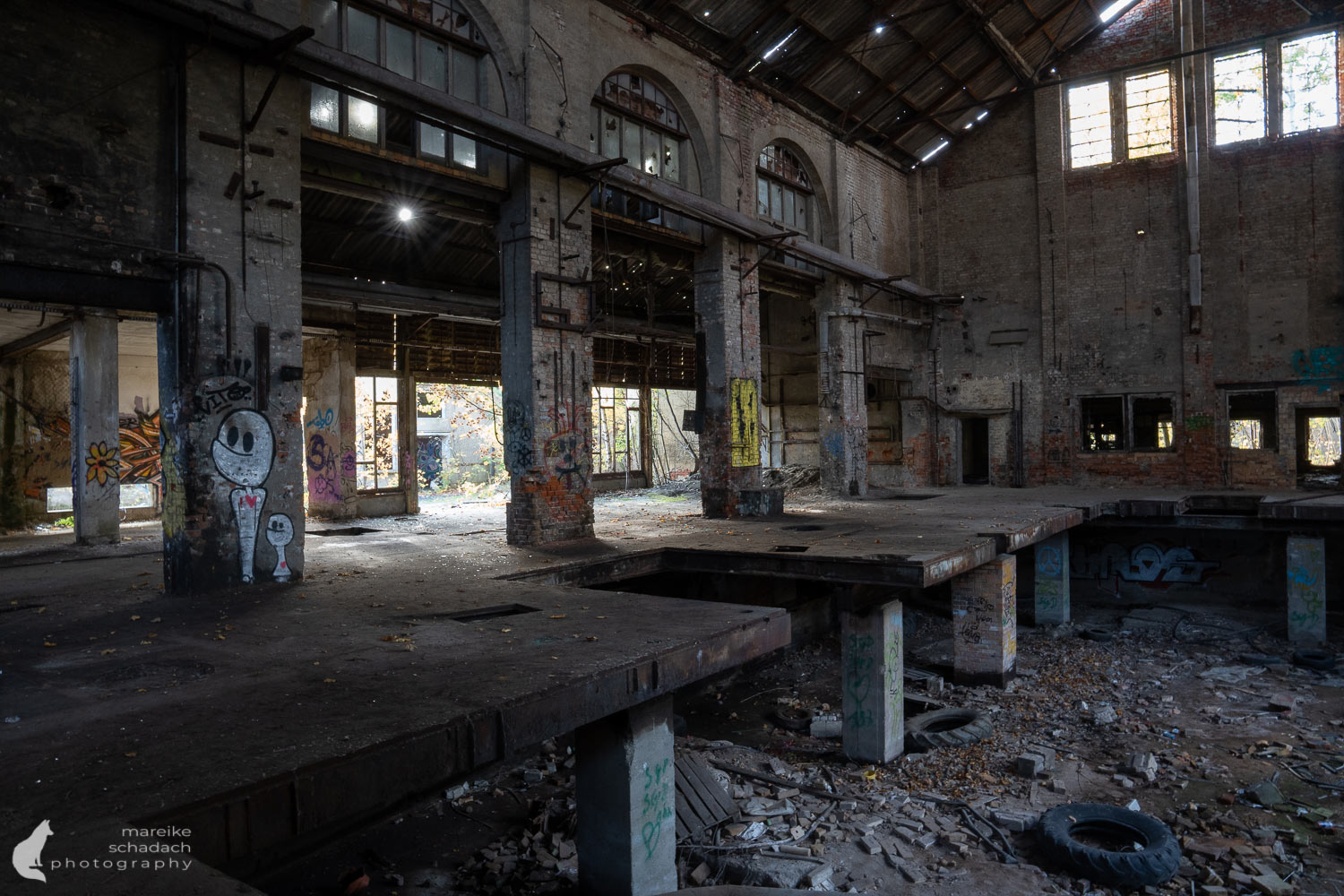
Visit: The object is not fenced, there are no signs. It is in severe disrepair. As of 10/22.
Address: Haidemühle
Directions to get there: Best by car.
Book Recommendations for Lost Places and abandoned Places in Berlin and worldwide
You want to discover more Lost Places? Then I have three book recommendations for you. You can order the books with a click on the pictures at Amazon. If you buy a book or another article via an affiliate link, I get a small commission and you help me to keep filling Fernweh-Motive with interesting articles. The product will not be more expensive for you.
There are many more lost places in Berlin and Brandenburg. Which abandoned places do you like best? Do you have any comments or suggestions about my article? If so, please write me a comment! And check back from time to time. I'm sure there will be more Lost Places in my little collection soon, which I would like to share with you.
Do you want to know when there are new articles on my blog? Then follow me on Facebook, Pinterest or Instagram. I would also be very happy if you share my article with your friends.
Recommendations for further Reading
Do you love abandoned places as much as I do? Then take a look at my two articles below:
